Studio Build Part I // Not making a brick but building a wall
December 16th, 2020INTROIT
What follows is a sort of photo blog, chronicling the period between April-December 2020. This was time spent neither making any new music, nor being particularly creative.
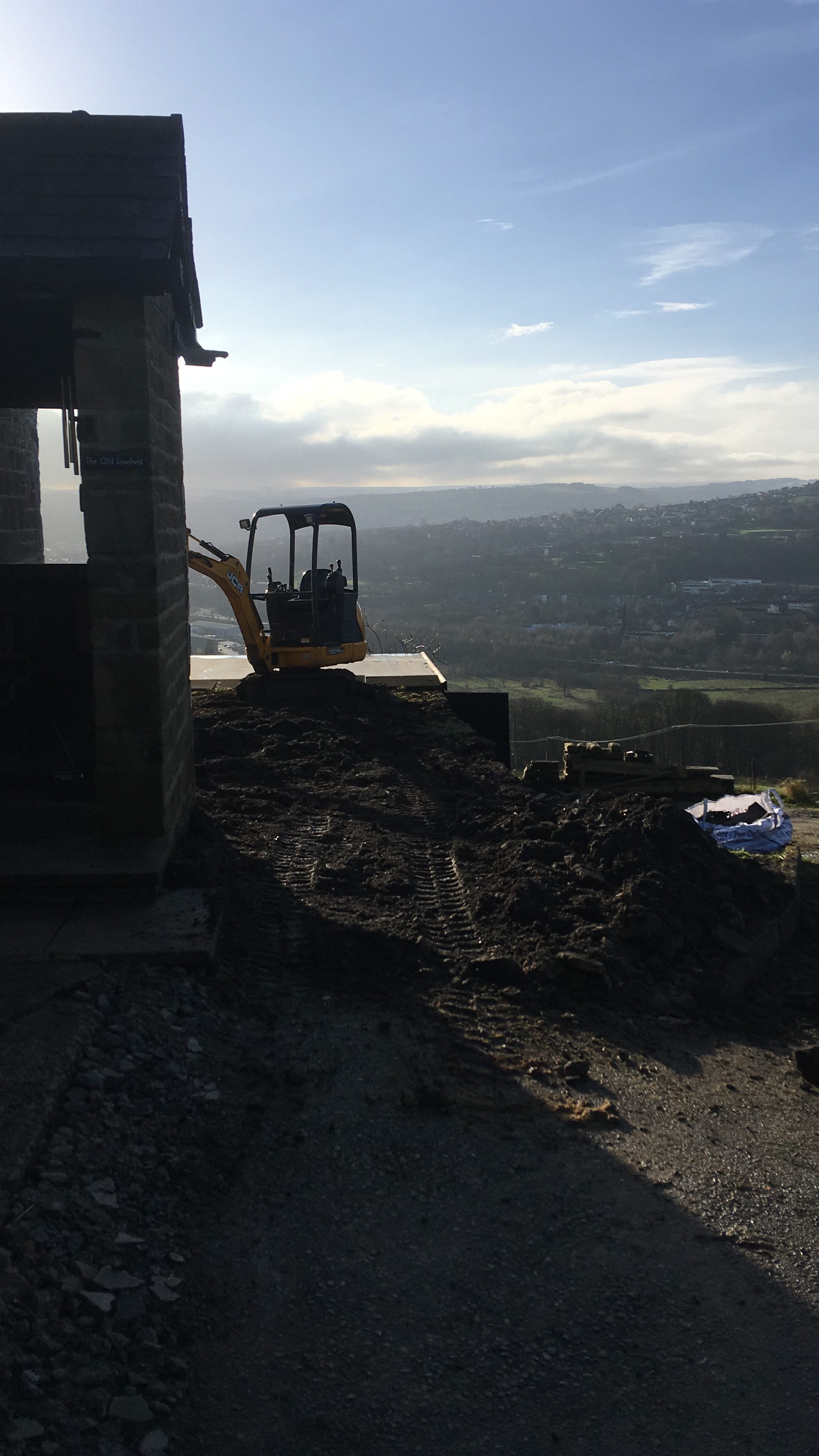
I felt a sense that this is what was expected of musicians (or of myself) – as if the pandemic has presented an unmissable and golden opportunity to create, to invent radical ways of expressing one’s creativity through a series of meaningful musical statements, and as musicians, we should make it our duty to rise to this occasion, or something. I’m being deliberately obtuse, but this is only as I felt the pressure to create at a time where there was no excuse not to. These circumstances have had the opposite effect, and permitted a stillness and the suspension of being habitually musical for a little while. Suddenly there was time to reimagine, reassess and reaffirm immediate surroundings after almost twenty years of physical transience, collaboration, travel, and communing with the invisible power in music. Instead, I have swapped this for communing with the very literal bedrock on which my home rests – moving vast quantities of earth and stone to create and alter a physical space, and perhaps uncovering opportunities to learn something about myself whilst doing it.
In short, I’m building a studio, and have decided to chart its progress through a series of blogs – mainly as not to forget what / how things happened, and also as it’s a useful place to gather images captured during the work itself. The very opposite of Grand Designs magazine (they rarely if ever show photographs other than the completed project). First, the access to the house itself had to be widened, making it easier for site vehicles to enter. Before launching into detail, an epiphany from March 2020:
NO ONE ELSE IS GOING TO HELP YOU
Although I’ve learned much from the endeavours that follow, letting go of the concept that others might blindly help you out – professional or otherwise; was a rare moment of clarity. Almost everything that follows (save for the wall rebuild), was done by hand, and was done alone.
THE WORK
Previously, the swing-round up to the driveway entrance was extremely problematic for most vehicles. A newly-erected fence to the left of the approach made access by anything exceeding the wheelbase dimensions of a small transit van virtually impossible. Removing the gate/gatepost didn’t really make much difference.
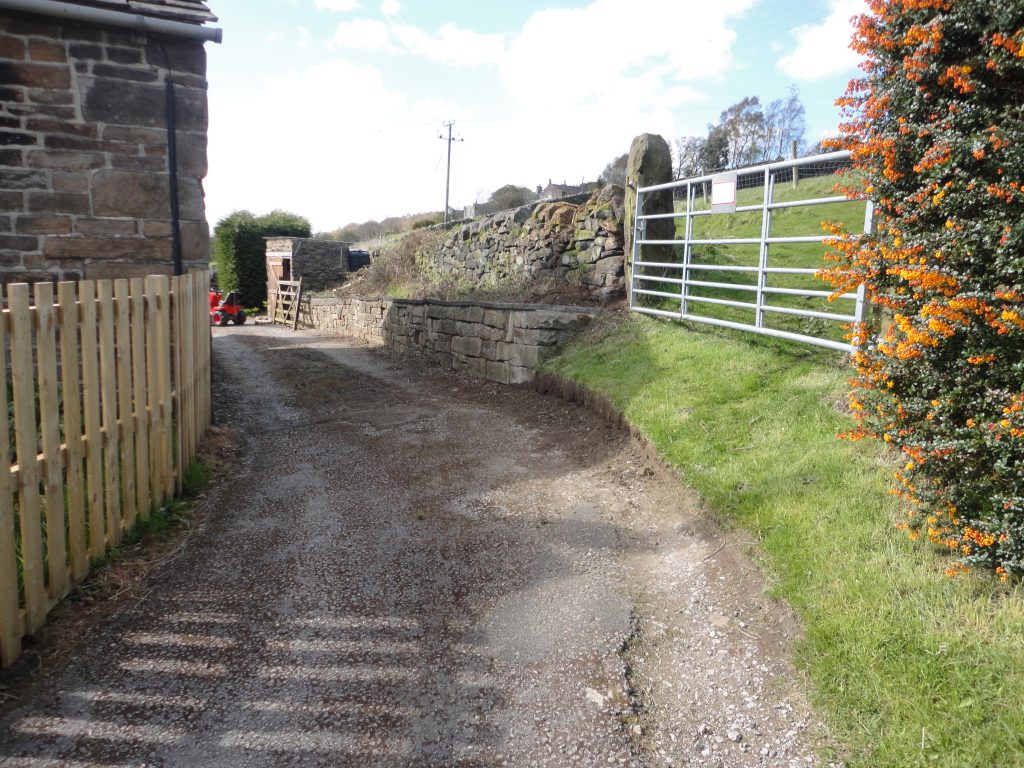
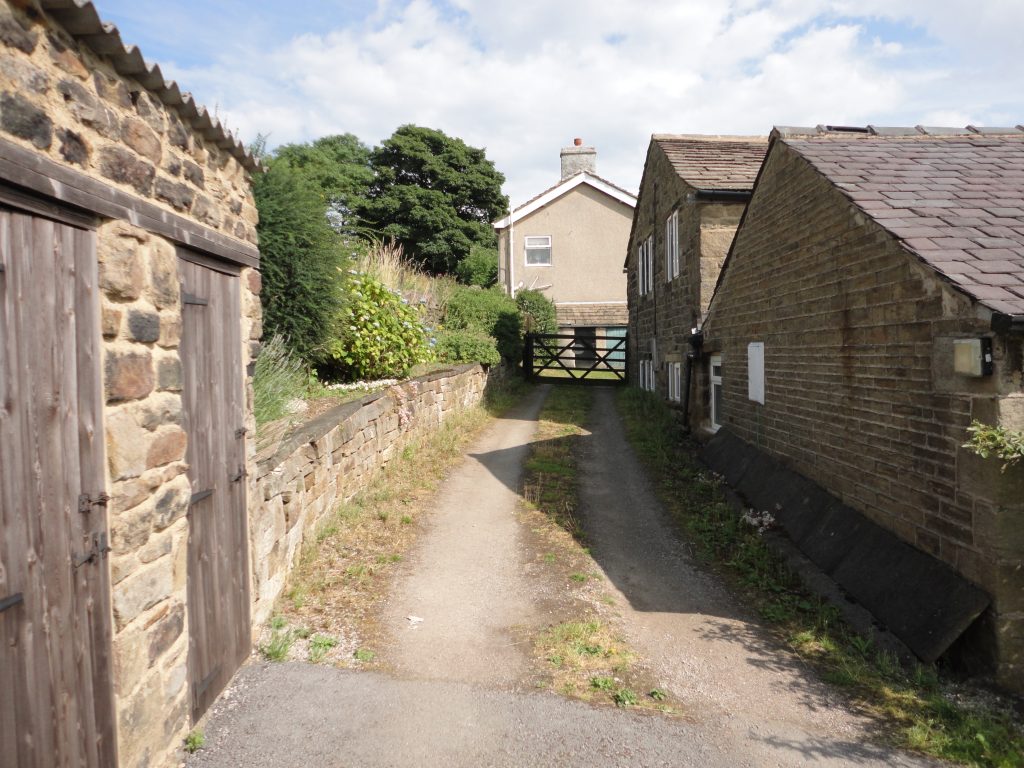
Note the lower wall/raised garden area leading to the coal sheds, and beyond that – one of two 13+ft Leylandii hedgerows.
LEYLANDII HEDGEROW REMOVAL – BEFORE / AFTER
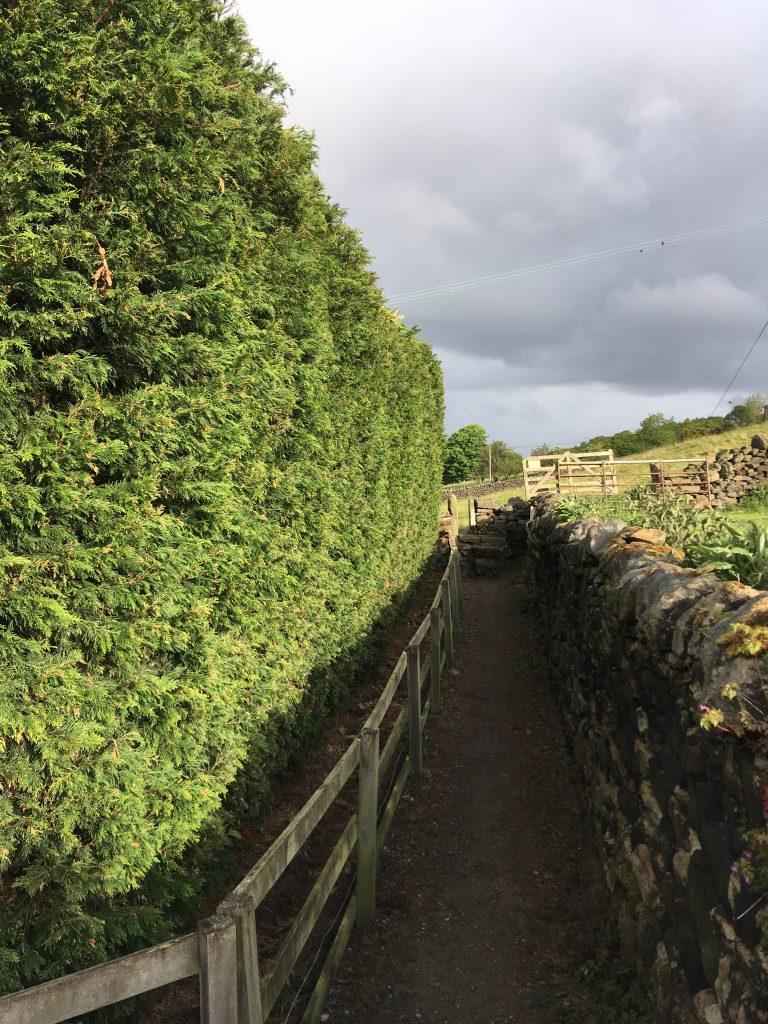

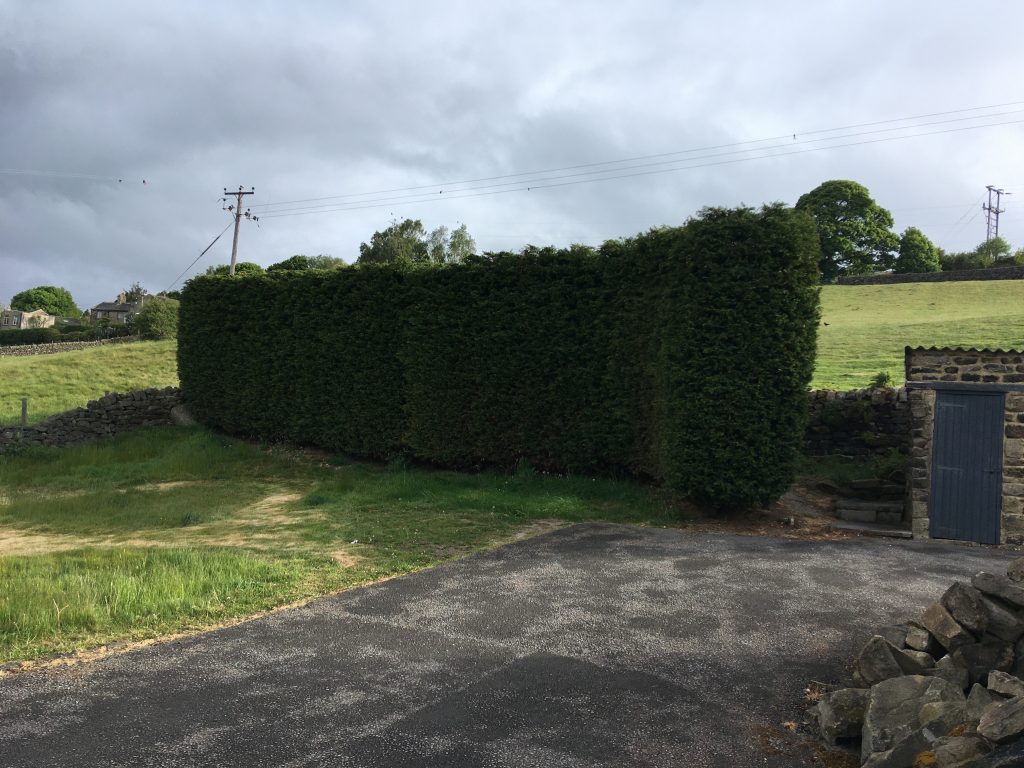
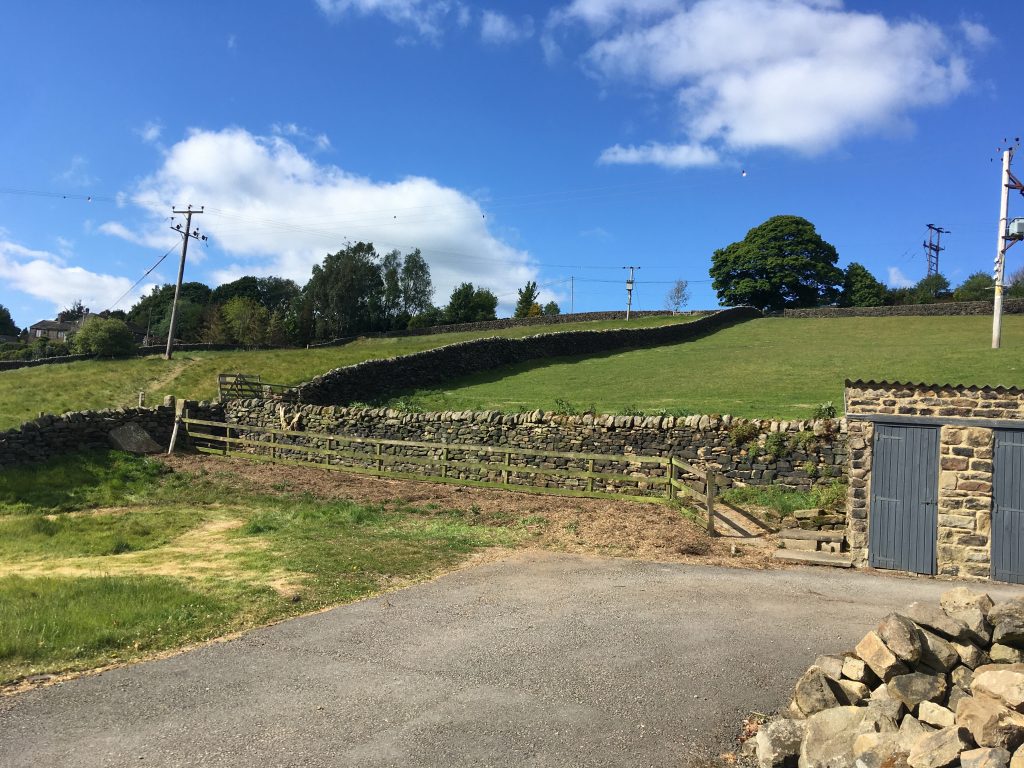
(UN)CONTROLLED SHED DEMOLITION & WALL #1 DISASSEMBLY
With the trees removed, attention was turned to demolishing the sheds at the head of the wall, behind which stood a 1200-litre oil tank, which was then sold on eBay, along with the external boiler, for £500.
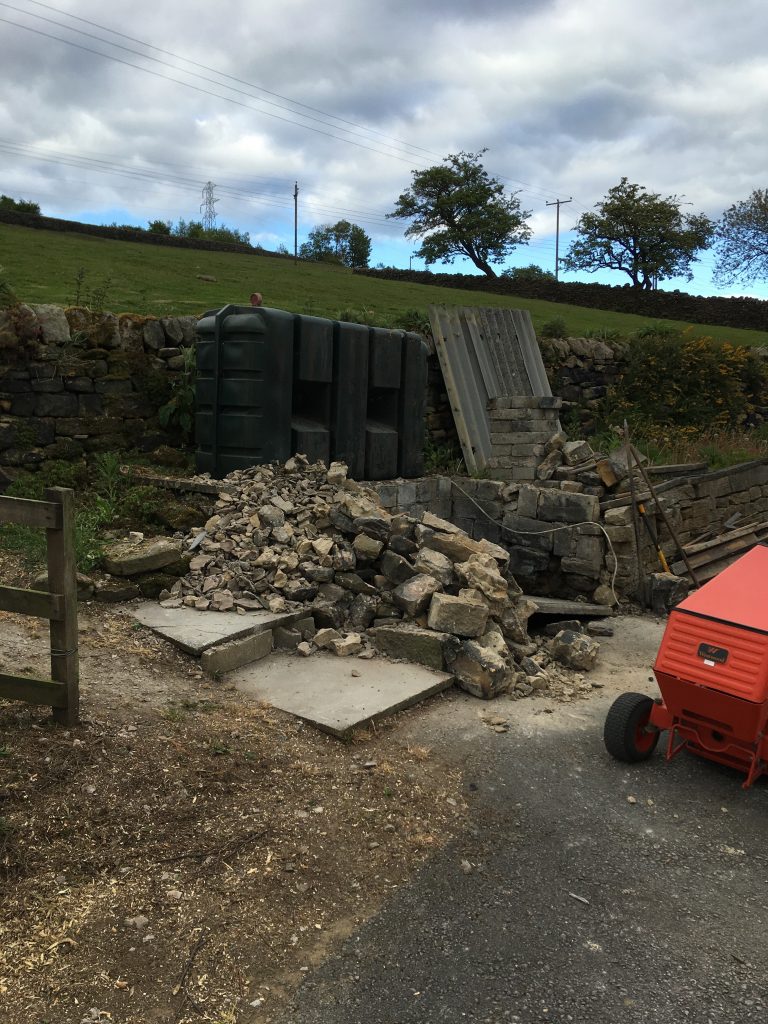
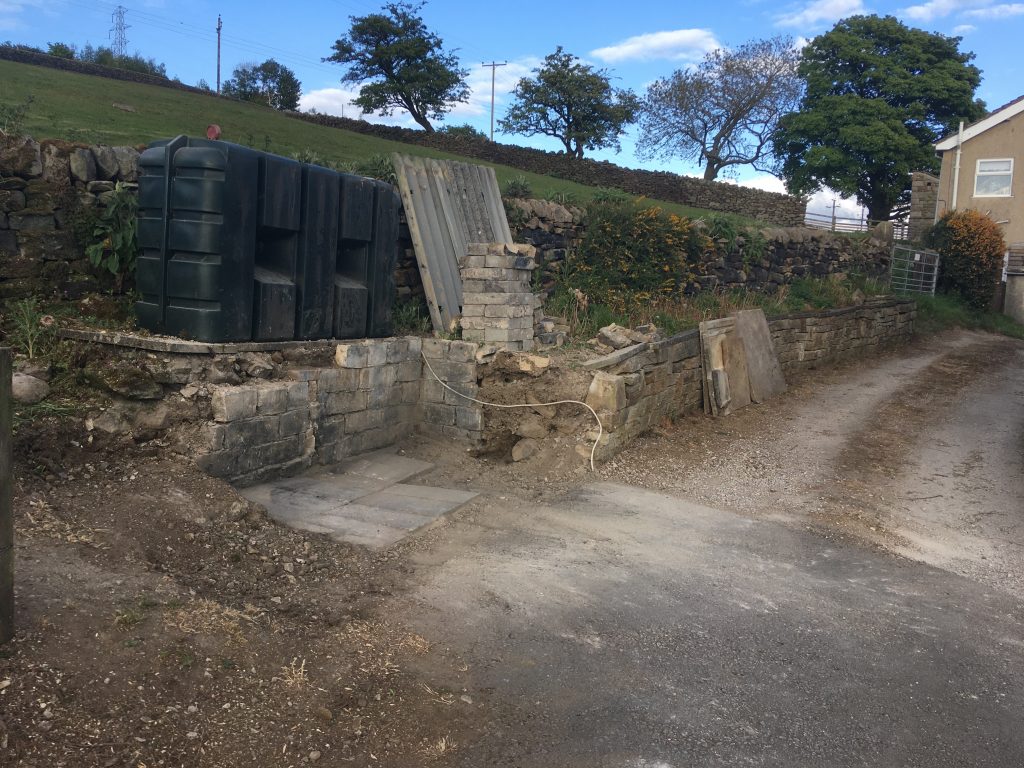
It was then collected by a couple who PUSHED the tank from the house almost half a mile to the main road and into a truck that wouldn’t fit down the lane. They were able to heat their water thenceforth, and I looked forward to cold showers for at least the following month.
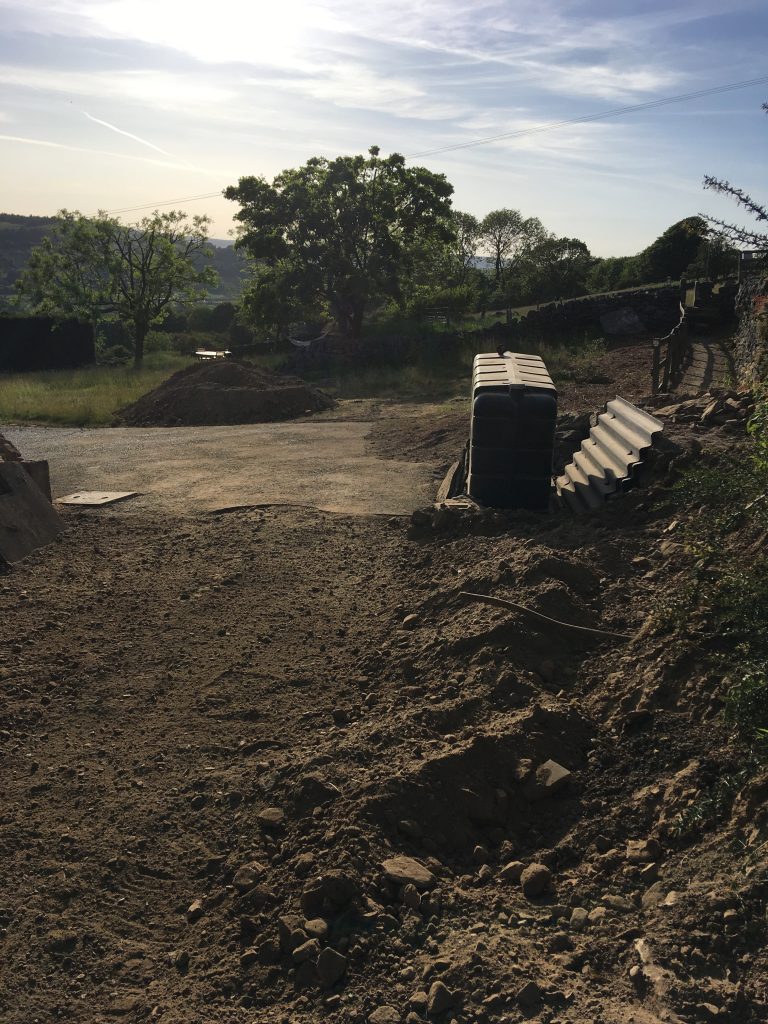
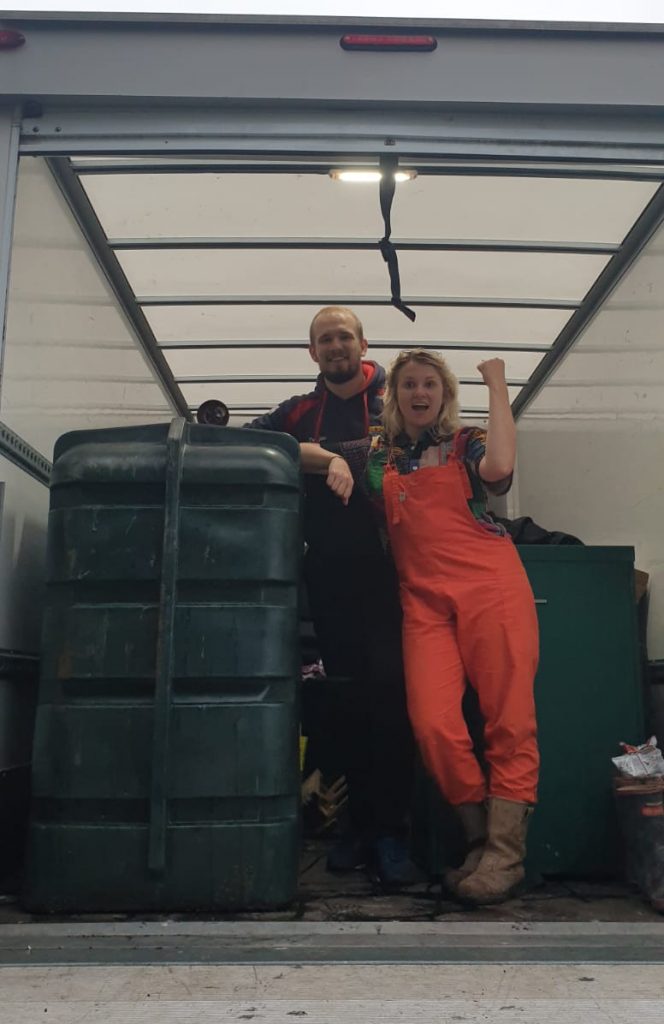
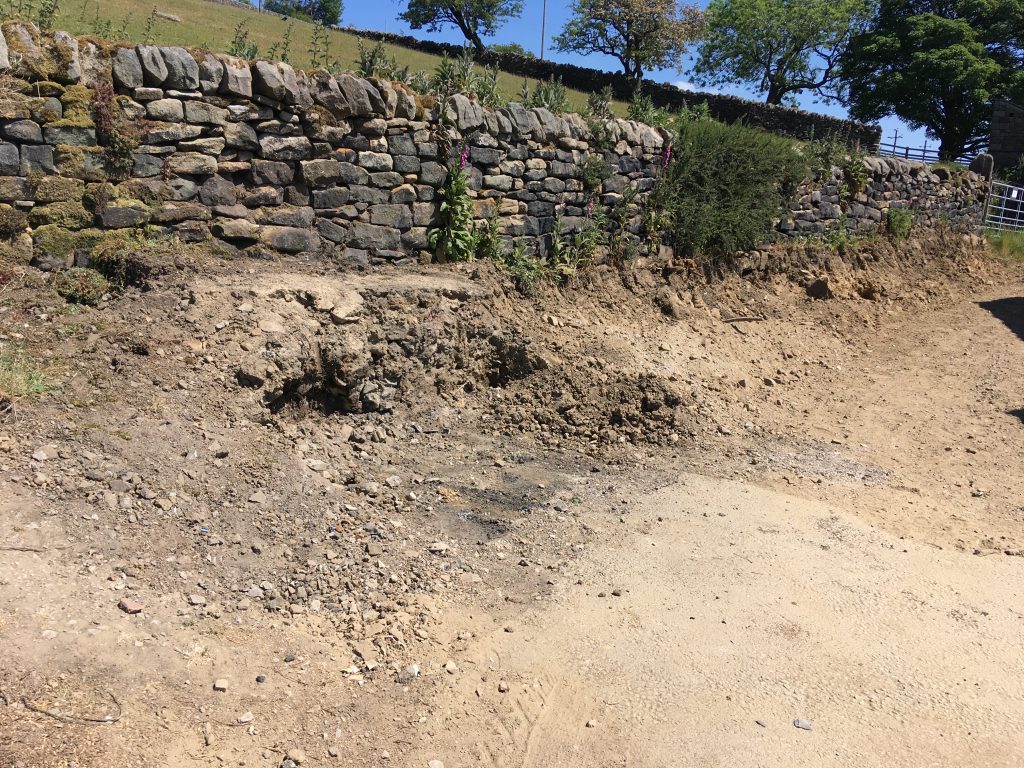
With the demolition of stone buildings, chipping off old mortar/cement from the stone by hand was needed so it can be reused for dry stone walling. Taking around a day and a half to clean the stone with a lump hammer and chisel was a strangely meditative act. Stone by stone, all of the lower wall was disassembled, exposing the earth/bank behind it. Up to this point, all of this work was done without machinery – everything completed by hand/wheelbarrow, save for those occasions where a garden tractor and trailer was used to move loose stone to the ever-growing piles of stone around the house.

JCB 8014 – ACQUISITION / OPERATION
Three separate people advised purchasing a mini excavator as a way to save on throwing money away on operator/hire costs for the duration of the project ahead. As plant machinery depreciates much slower than cars, for example, I stand to sell it at not too much less than I paid for it. Although I now love it too much to think of parting with it…
At no point in my life to date did I ever think I would purchase a JCB after viewing a two-minute WhatsApp video of it in action from Matt at Budd Plant, then teach myself to operate it after studying a PDF of the Operator’s Manual and a couple of YouTube videos. But I did. Despite my additional delivery instructions, it arrived on the back of a vehicle that was almost too large for the main road itself. A human being can crawl on hands and knees faster than it takes to track a JCB up a half-mile lane.
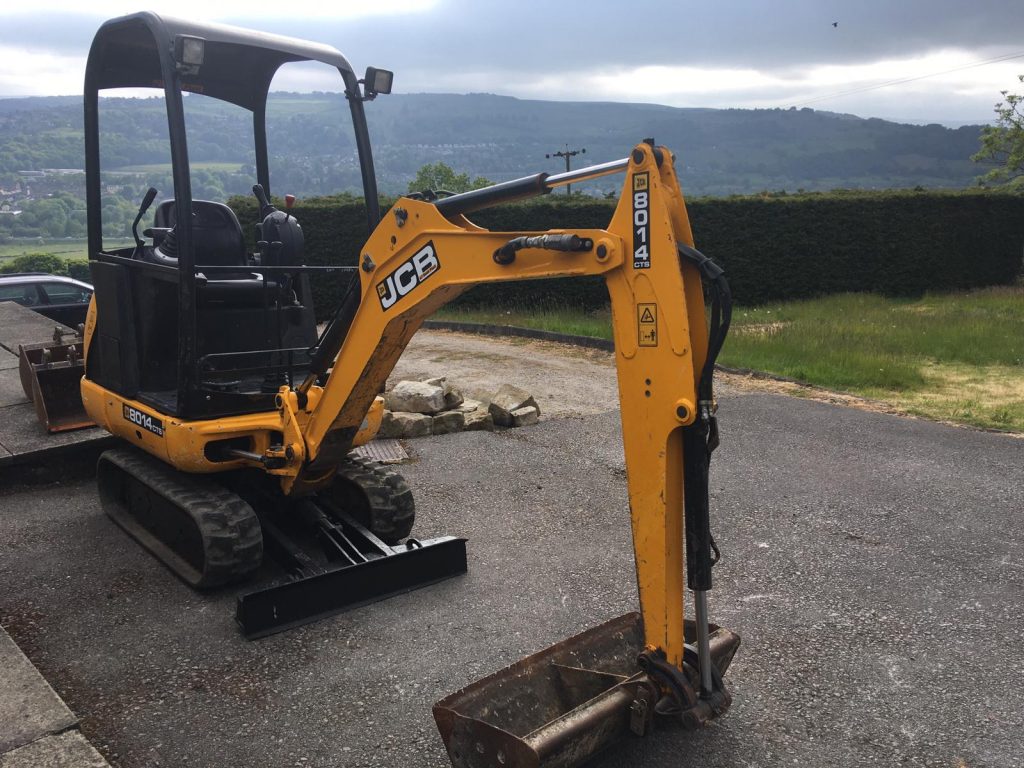
After an interminable journey home, the work began. The difficulties included, but were not limited to:
Complete unfamiliarity and lack of any practical experience whatsoever with the machine;
As the driveway is already very narrow, squaring up to the work was not possible, and often collected only very small loads;
Avoiding neighbouring windows was essential, whereas utility meter boxes are fair game;
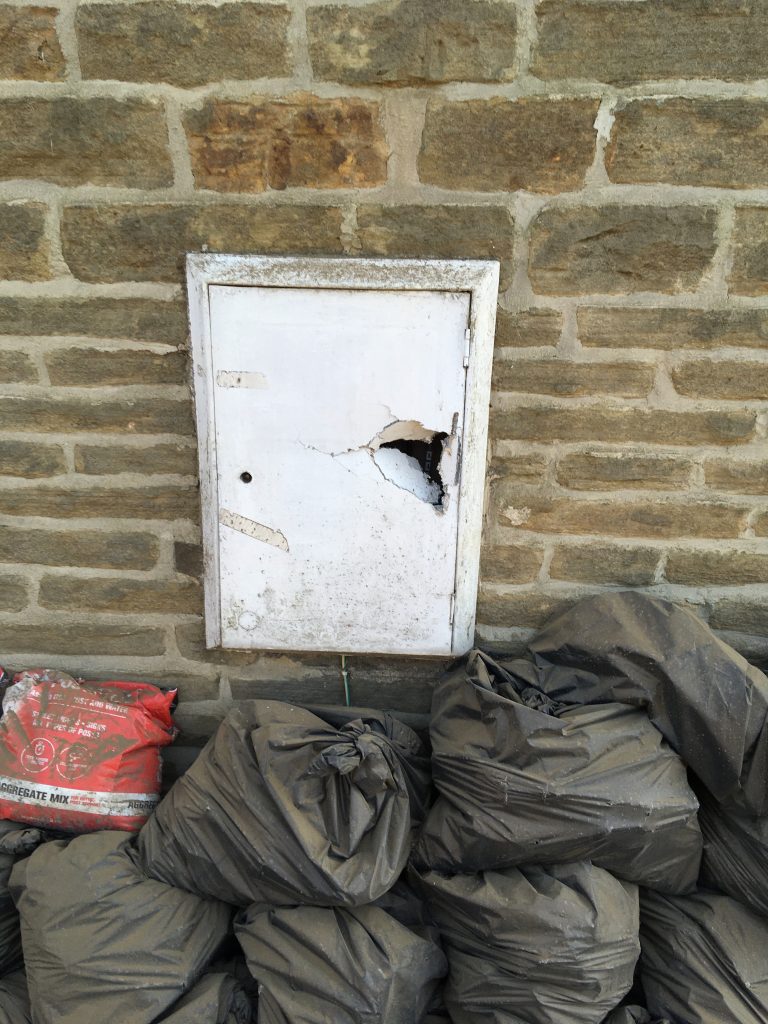
Both the lack of and/or effectiveness of using a dumper truck (including another person to operate it) meant tracking back and forth from worksite to garden to dump loads of earth was both time consuming and tedious;
Attempting to excavate/collect at high/above ground level and at odd angles;
Figuring out how to use excavated earth to level/grade uneven ground on a sloped site.
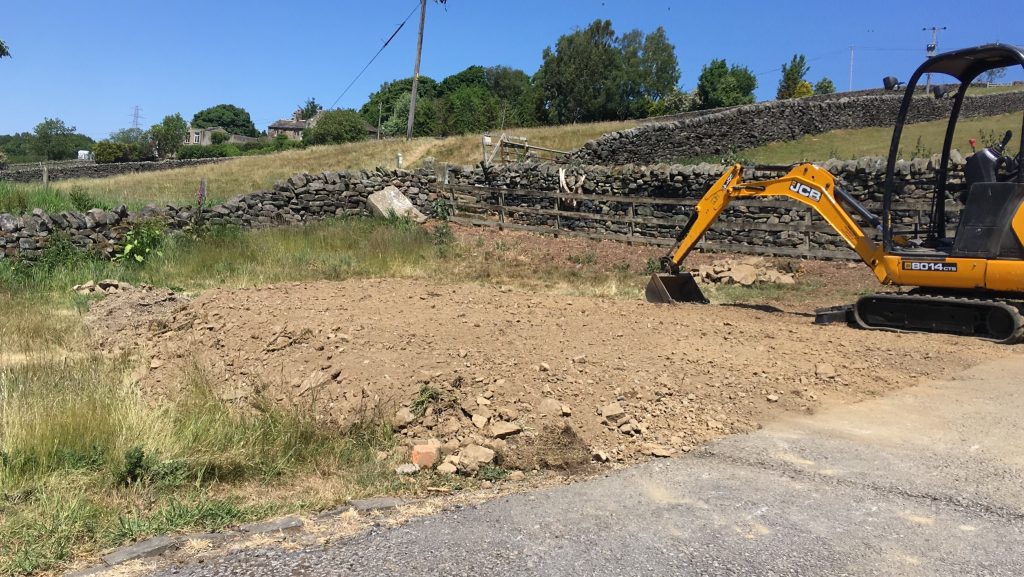
With these difficulties present, I was able to achieve a haphazard baptism of fire that boasted few witnesses. Since taking ownership in May, I’ve clocked just over 130 hours of time on this machine and can beat anyone in my postcode at a game of Tiddlywinks using only the edge of the grading bucket.
BEDROCK
And then, the fun began: the closer to the field wall base the excavation became, the enormity of the stones uncovered increased in disproportionate size and frequency. The JCB can do much to prise these from the ground, but may of them caused the excavator to tilt forward or fling it backwards if it lost its grip, meaning that many of the larger stones / boulders had to be started off using a pinch bar (point & chisel) and shovel to loosen the surrounding earth/small stones holding them in place. This was the case along its almost 40-metre length, including the lowering of the footpath section behind where the trees once were.
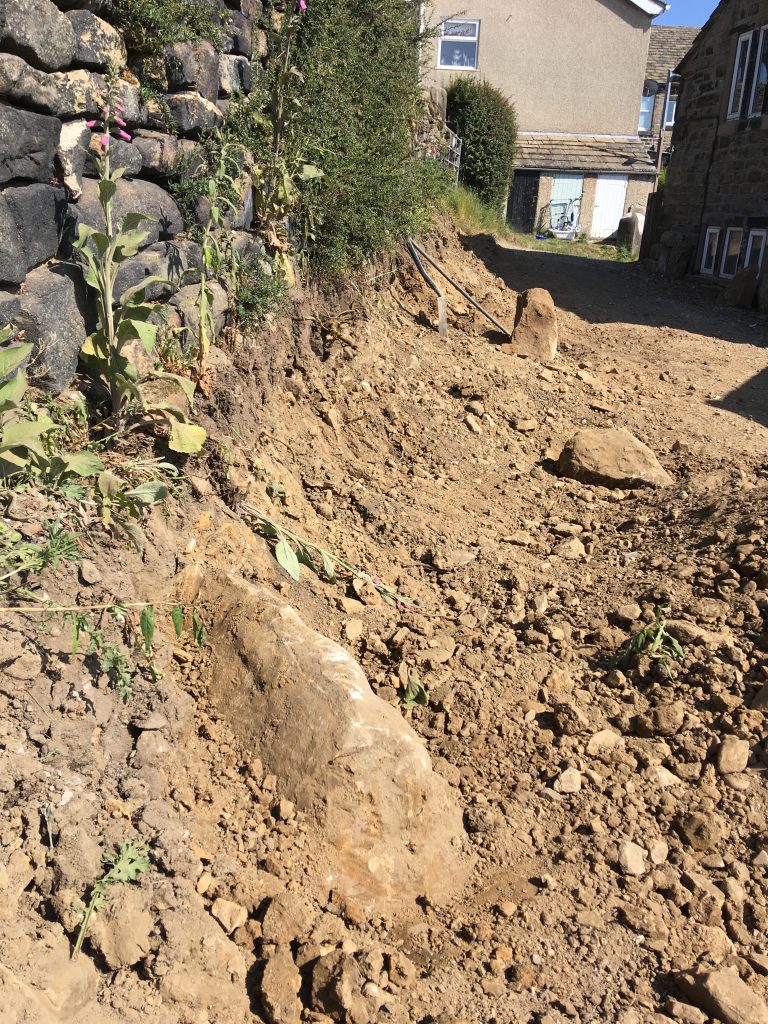
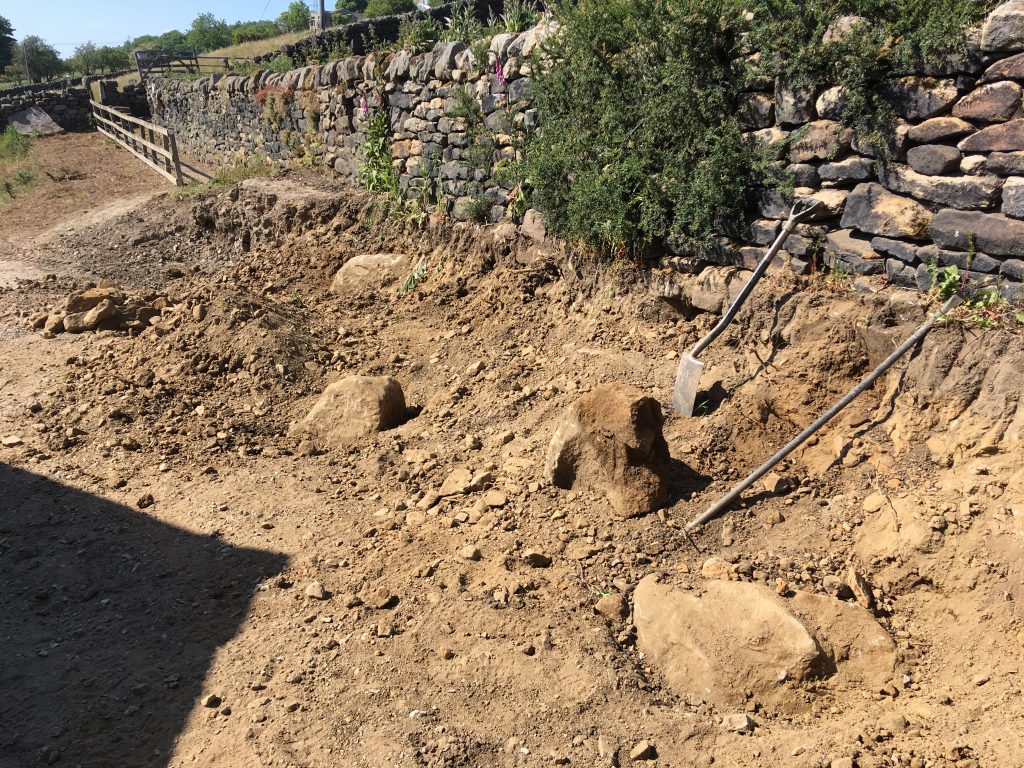

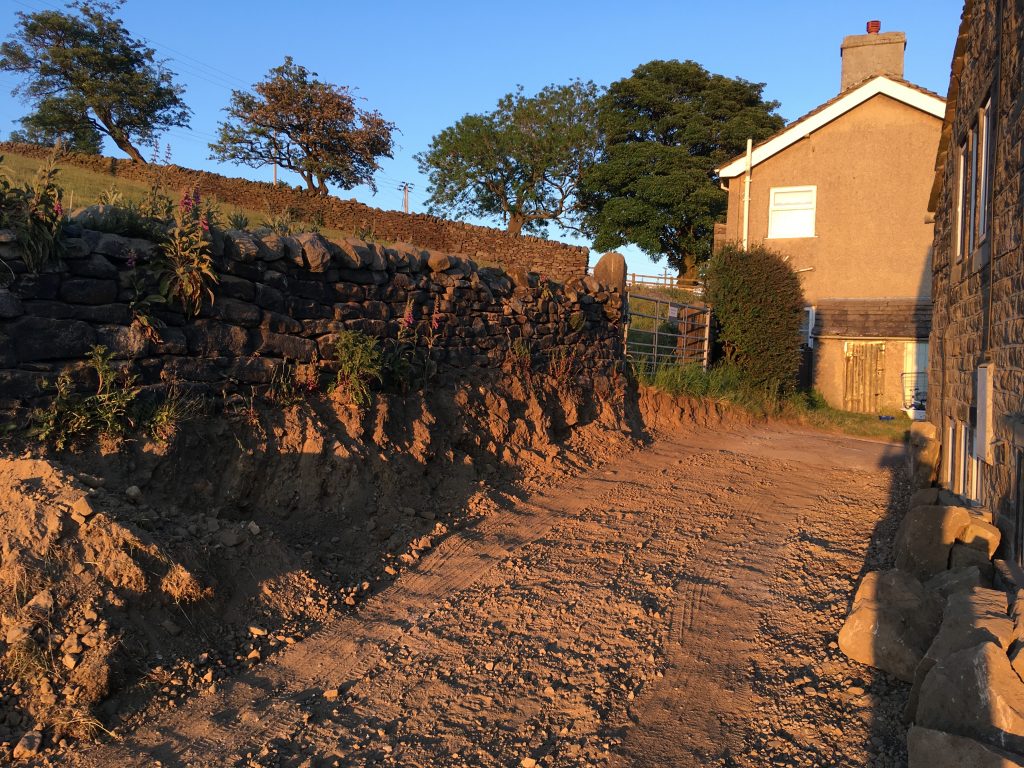
What often seemed like medium-sized stones on the surface, turned out to be three times their size once unearthed. Below are two photos of the same piece of stone. This and many others like it are now a striking feature in some of the base sections of the rebuilt wall.
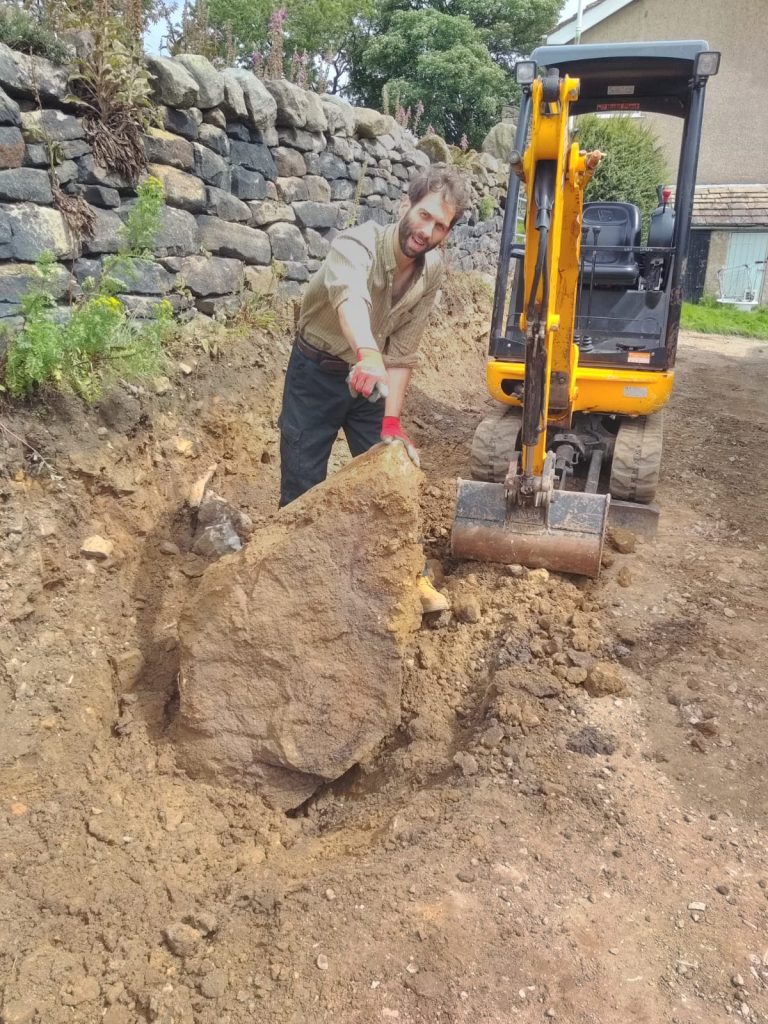
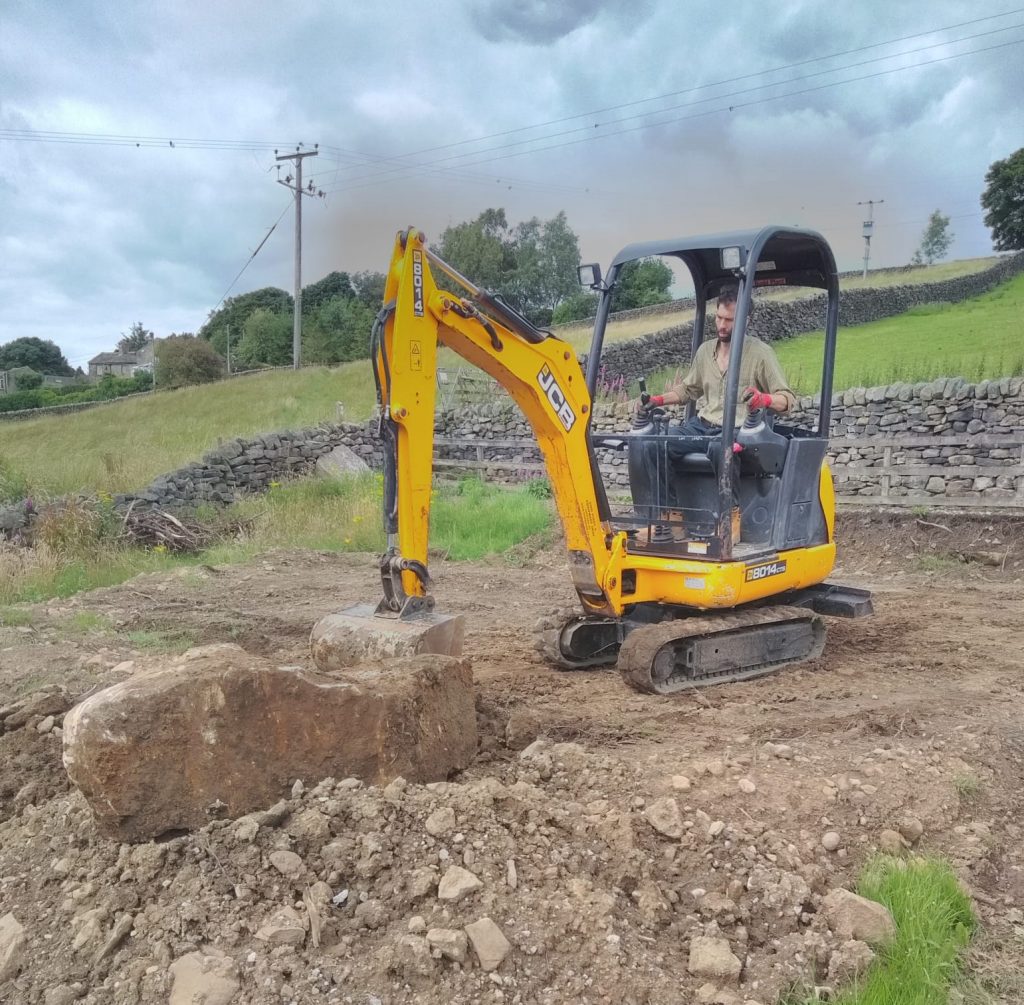
UTILITIES – GAS & ELECTRICITY
GAS
Oh yeah, and as I’d completely removed the means to heat hot water, meant that I had to carefully locate the mains gas supply in the field above, then dig a near-vertical trench from the field level to a depth of 500mm below driveway level (a total 3 metres in height), and over to the house . Here’s how that went:
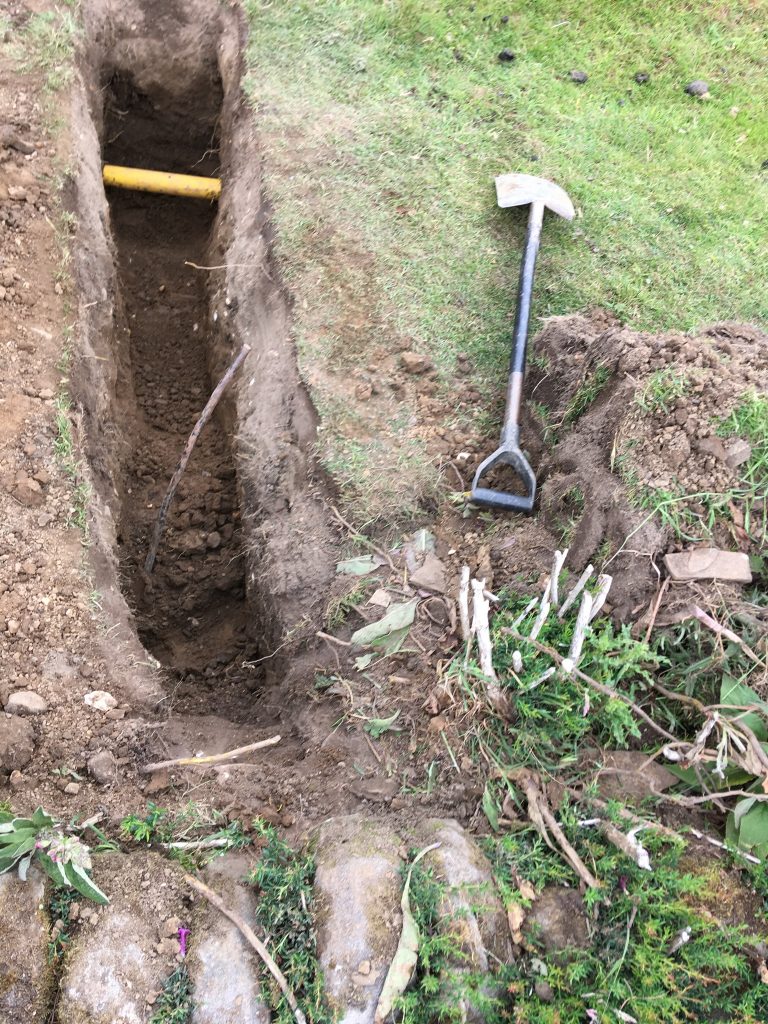
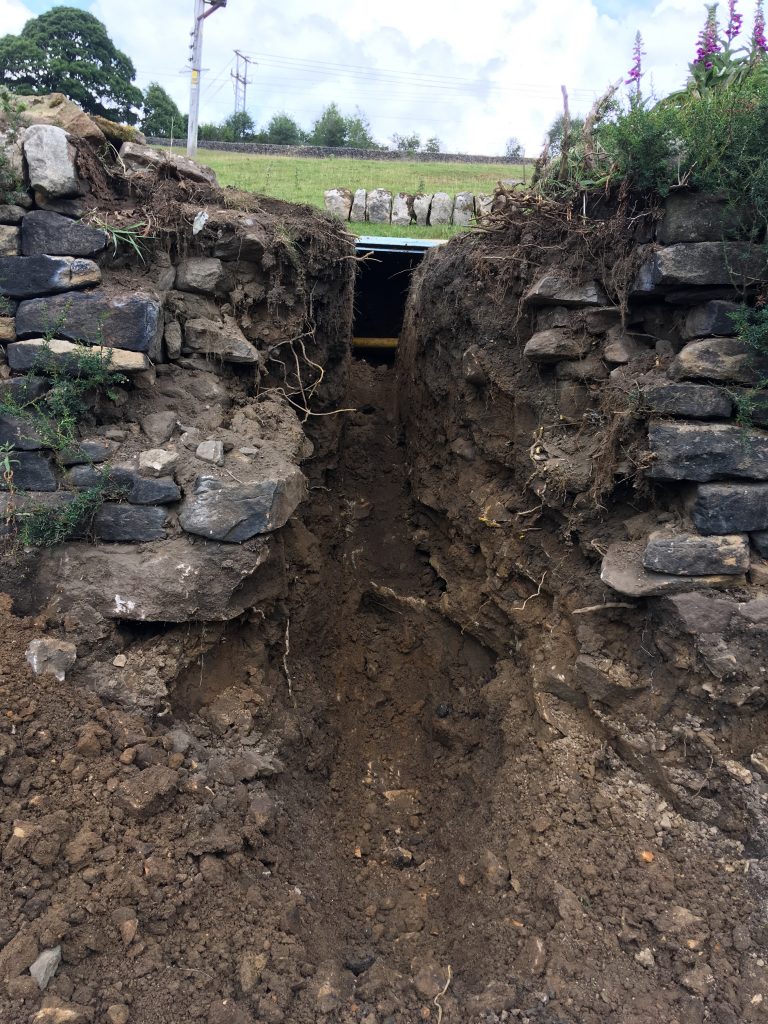
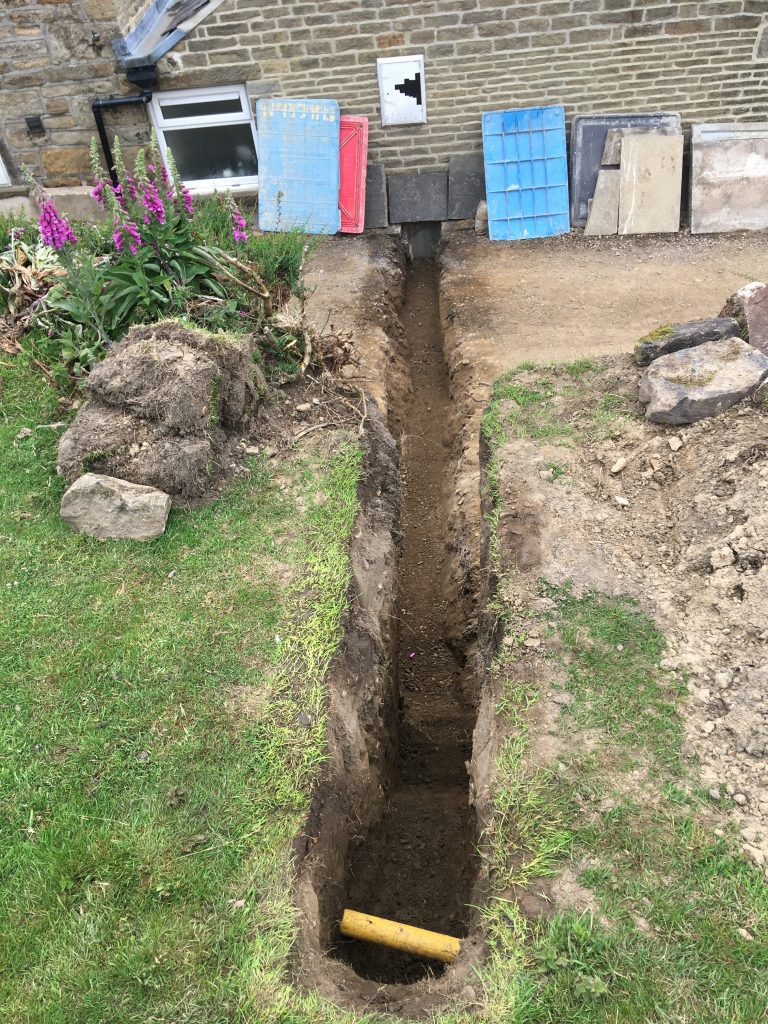
This last photograph belies a whole day of jackhammering through 1m of solid rock to reach the required trench depth for the supply pipe. Bastard.
ELECTRICITY
Neighbouring this trench by only a few feet, was the mains electricity supply – uncovered whilst excavating the wall base. Without the necessary slack to bury it behind the newly-built wall, more time and expense ensued, which meant rebuilding/negotiating it for six weeks before the cable could be extended. Bastard.
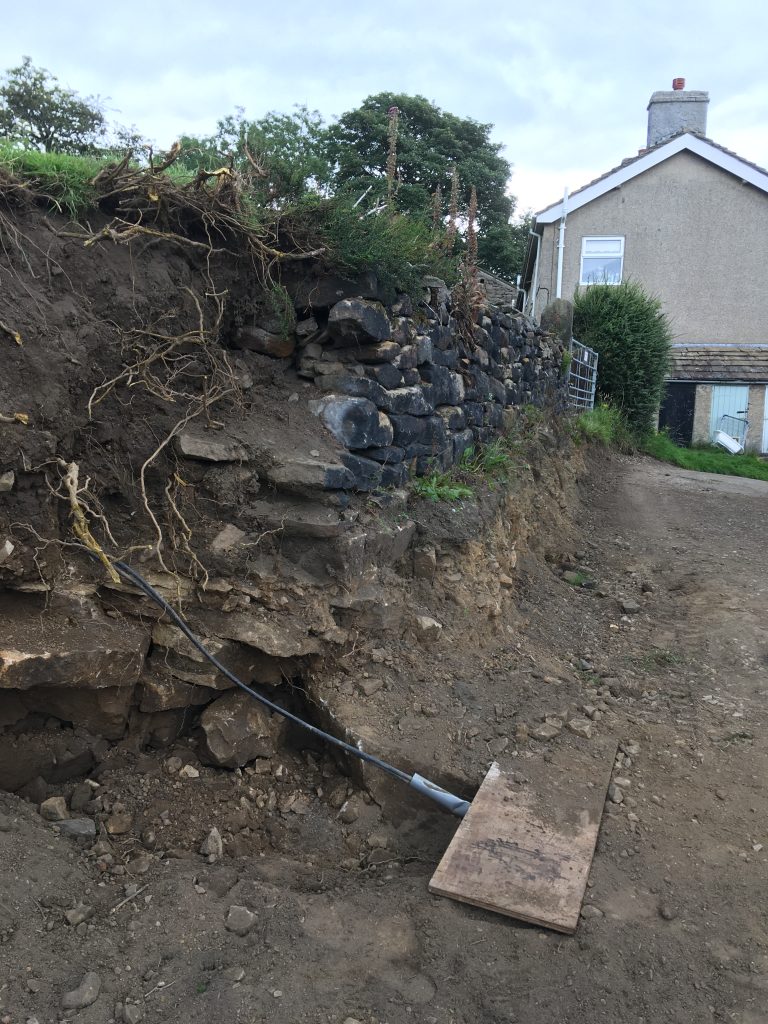
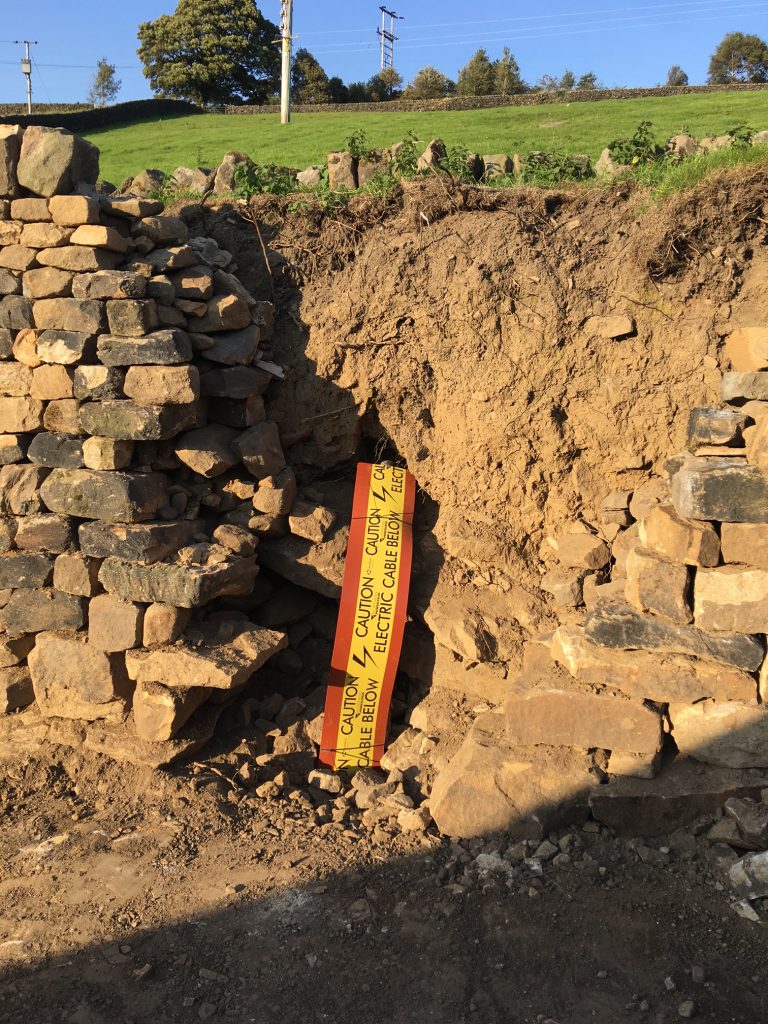
STRIPPING OUT
Stripping Out is a dry stone walling term used to describe the systematic dismantling and laying out of the stone on the ground, placed as close as possible to the wall base, in descending size order. With the raised bank now removed, and the earth used to flatten the upper garden slope beneath the fenced footpath section, stripping out of the main field wall could now begin. The JCB was perfect for loosening/pulling the stones out, but these still had to be manoeuvred and placed out as described above by hand. Kind of. In addition, there was a never-ending amount of loose earth and smaller stones – making the work unbearably dusty in hot weather, and almost unworkable in the wet. The following photos are in no particular order, but show the general mayhem, confined site space, and the increasing levels of insanity experienced on a daily basis.
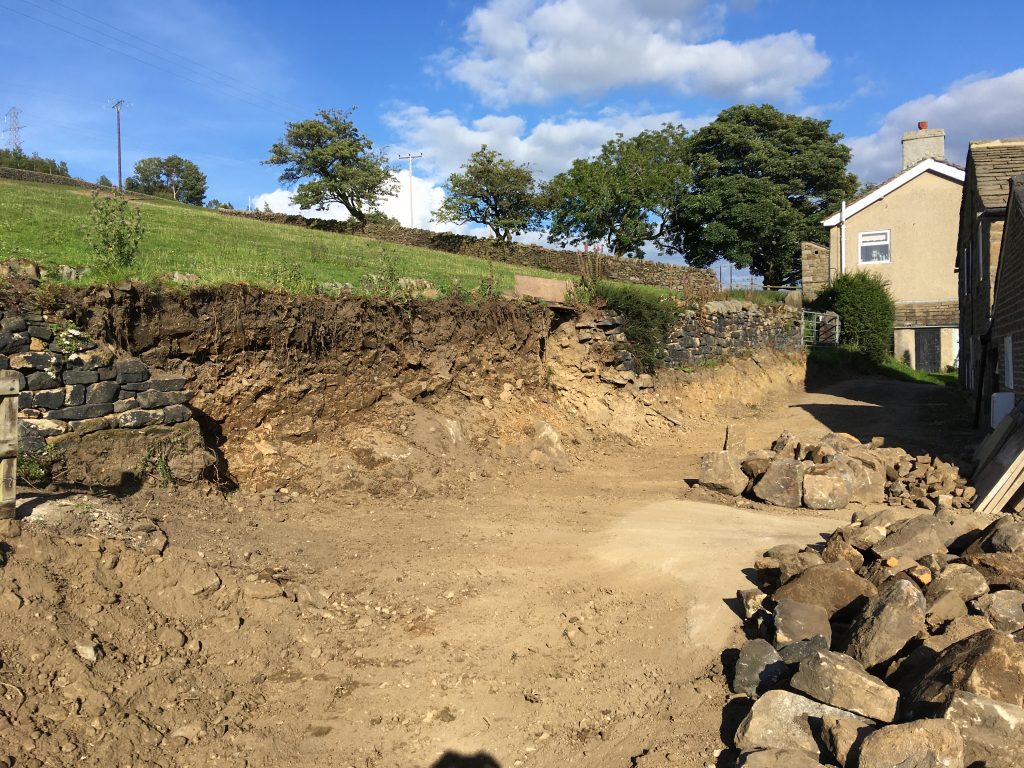
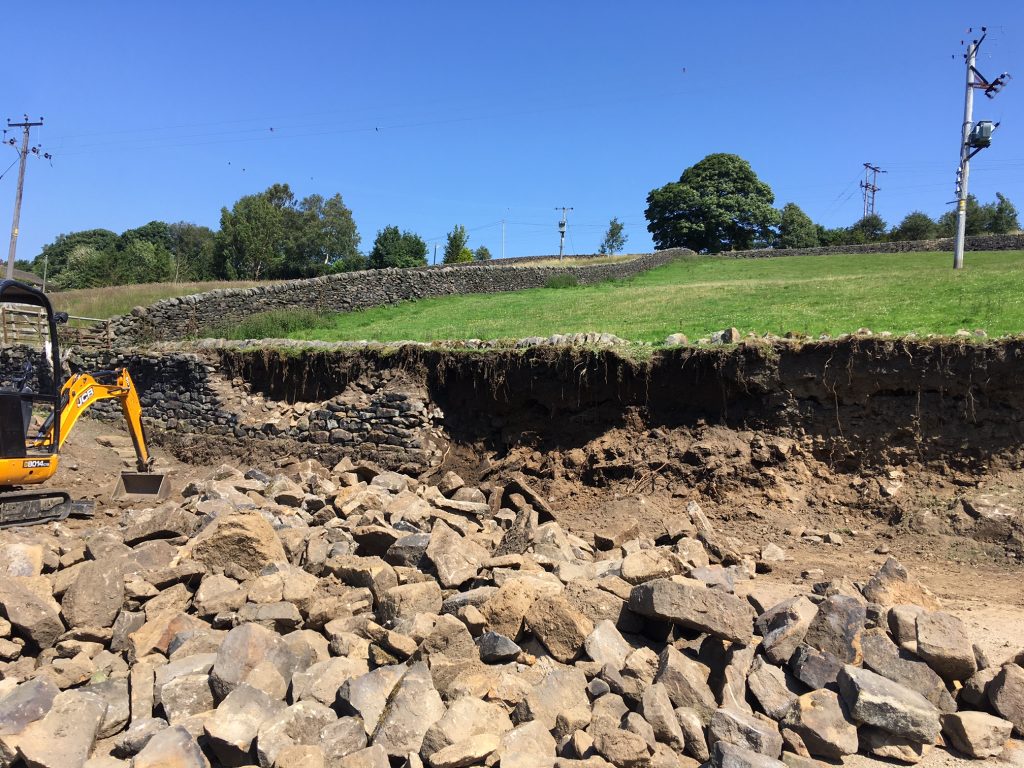
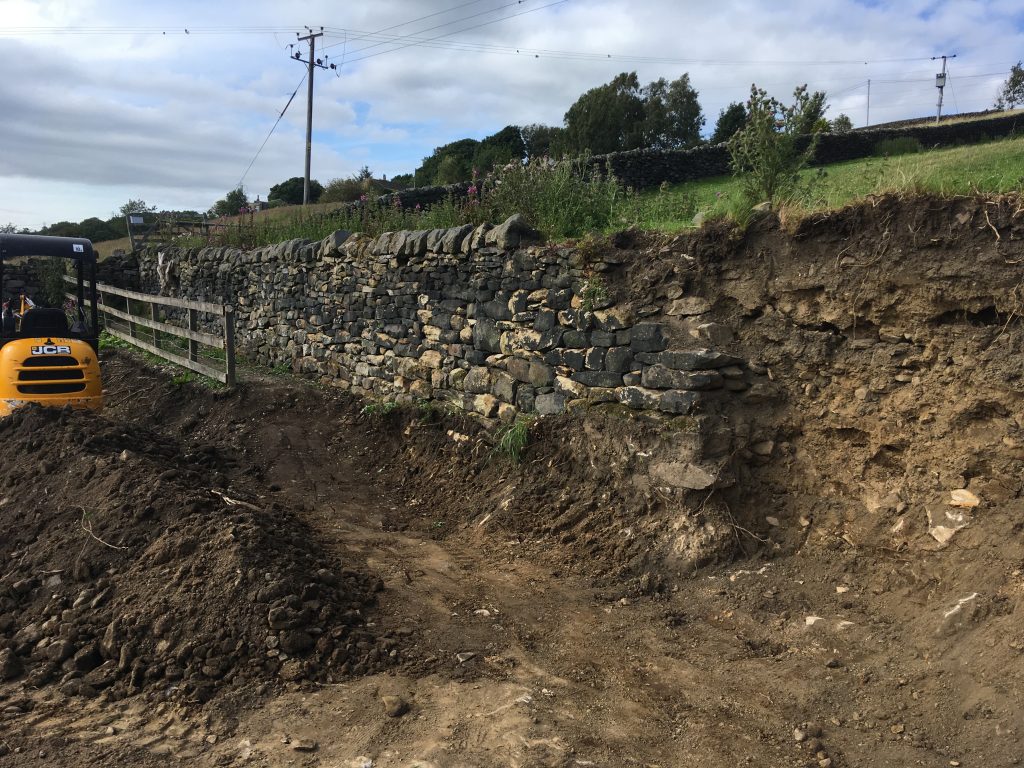
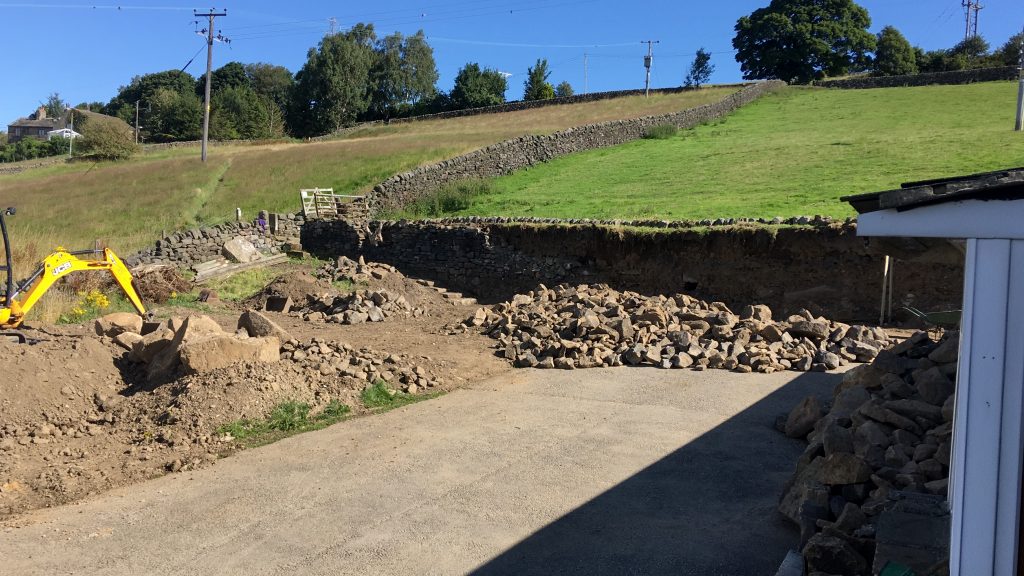
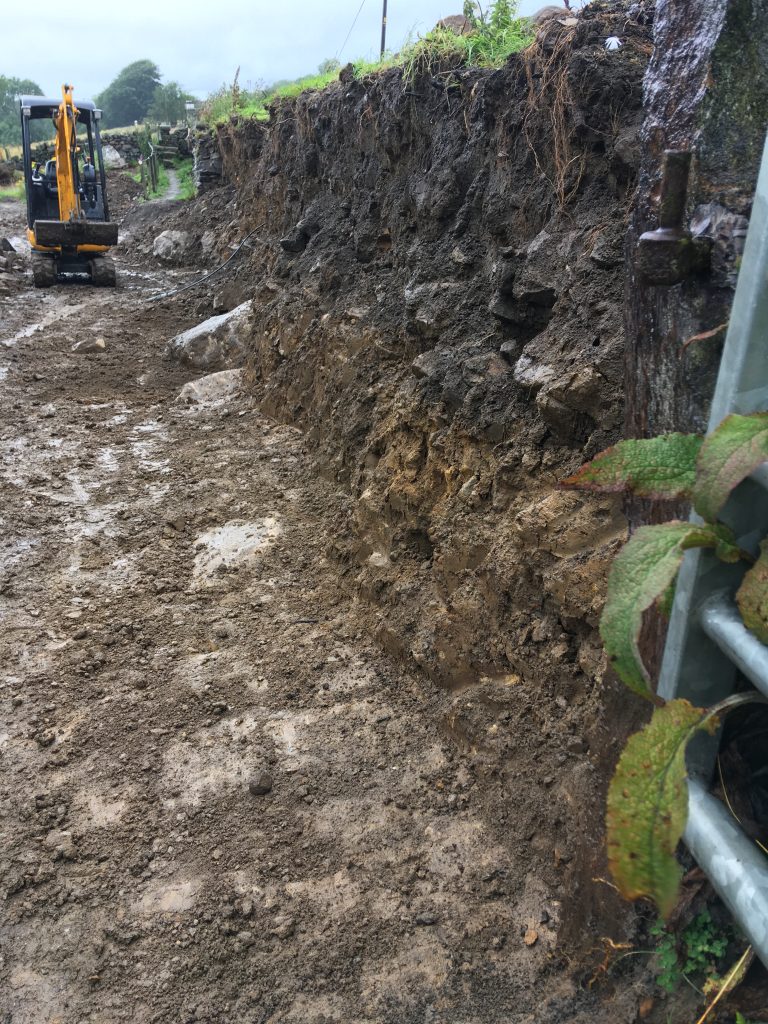
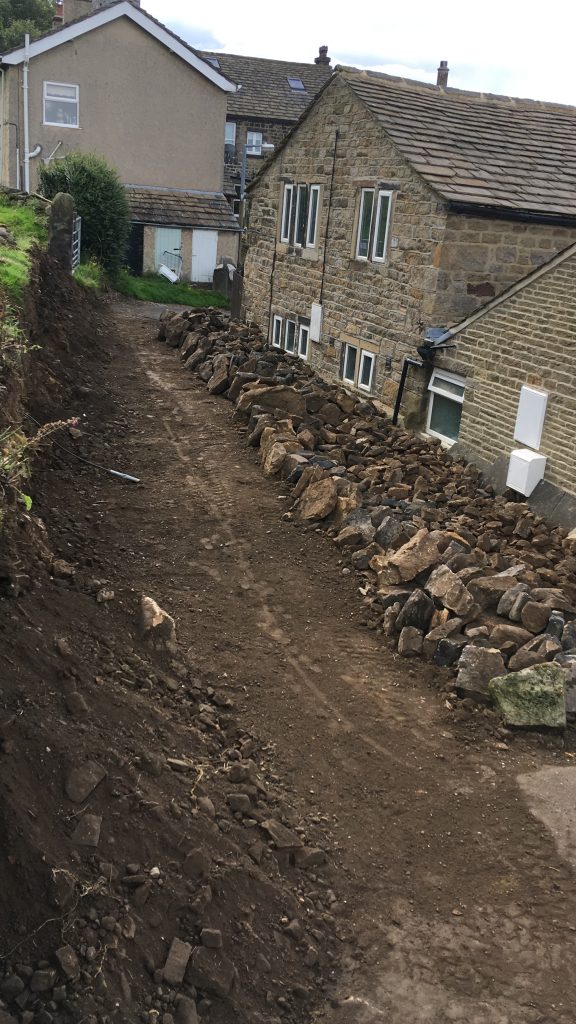
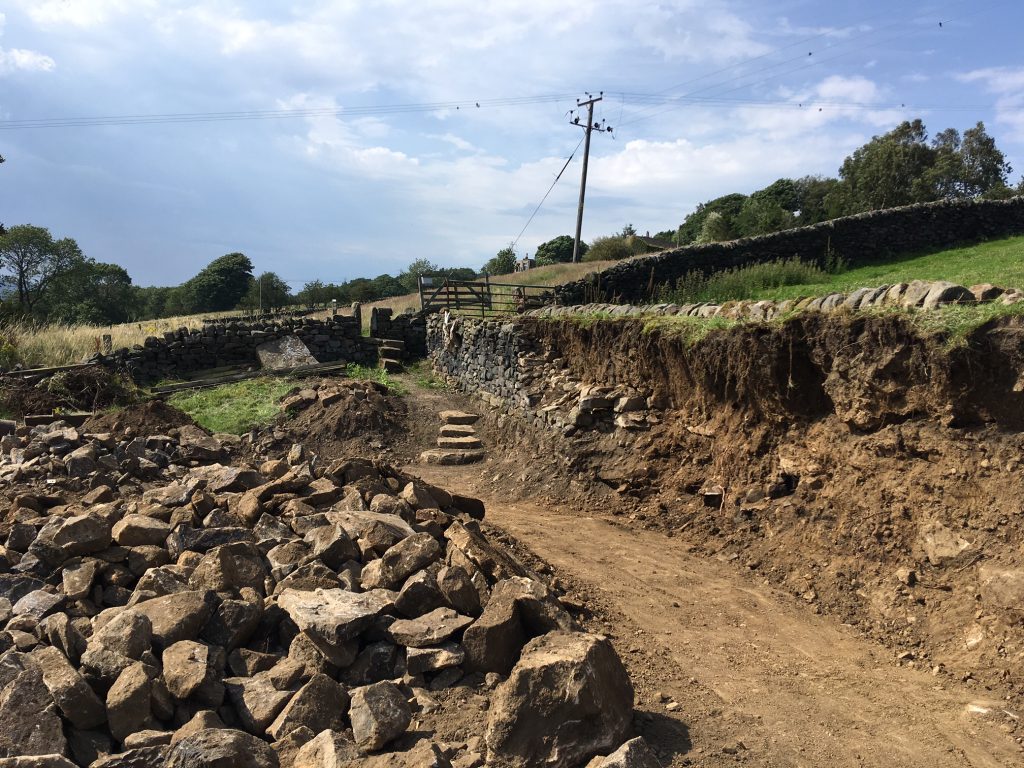
ON THE SEEMING INSURMOUNTABILITY OF THIS TASK
Around now seems apposite to introduce an element of quasi-philosophical reflection on this endeavour. Looking at these photographs months after the event is an odd experience. Collected here in this fashion, their flattened expression says nothing of what was going on internally for me. Pretty much every day I woke up at 6am for yoga practice, had coffee, then ventured out. On approaching wherever I’d left off the previous day, I’d purposefully ignore the enormity of the work ahead – instead focussing on a single/set of stubborn rocks or a pile of earth that seemed never to diminish, until wondering what the hell I was doing with my life. More coffee (+biscuits) usually followed after several hours, then back out again. Then lunch. After that, I’d typically work continuously, hitting my stride at around 17:00, then work until around 18:00, or sometimes later. In light of the current situation, I felt blessed by the good weather, the temperature, the outside space; and although I cannot say the same for the pandemic, I did nonetheless feel that this enforced stasis was grounding me to a sense of place in a way I’d never experienced before. As mentioned in the opening paragraph of this blog, the years of moving around have never appeared more vivid than in their absence. So day after day, for what seemed like countless weeks, I worked at nothing. At the conclusion of each day I would look at what I’d done, and see nothing. My father, who visited me during the summer, came out one day to help with some of the work, and remarked on this sense of slowness, and on the visible lack of progress after the passing of many hours spent trying to unsuccessfully force a single rock from the ground. There is very little to show for it, almost forever.
Then there was the indescribable joy of cleaning up, cooking a simple meal at the end of the day, and then sitting outside to eat it with a glass of something alcoholic and being completely overwhelmed by tiredness in some sort of post-marathon relief.
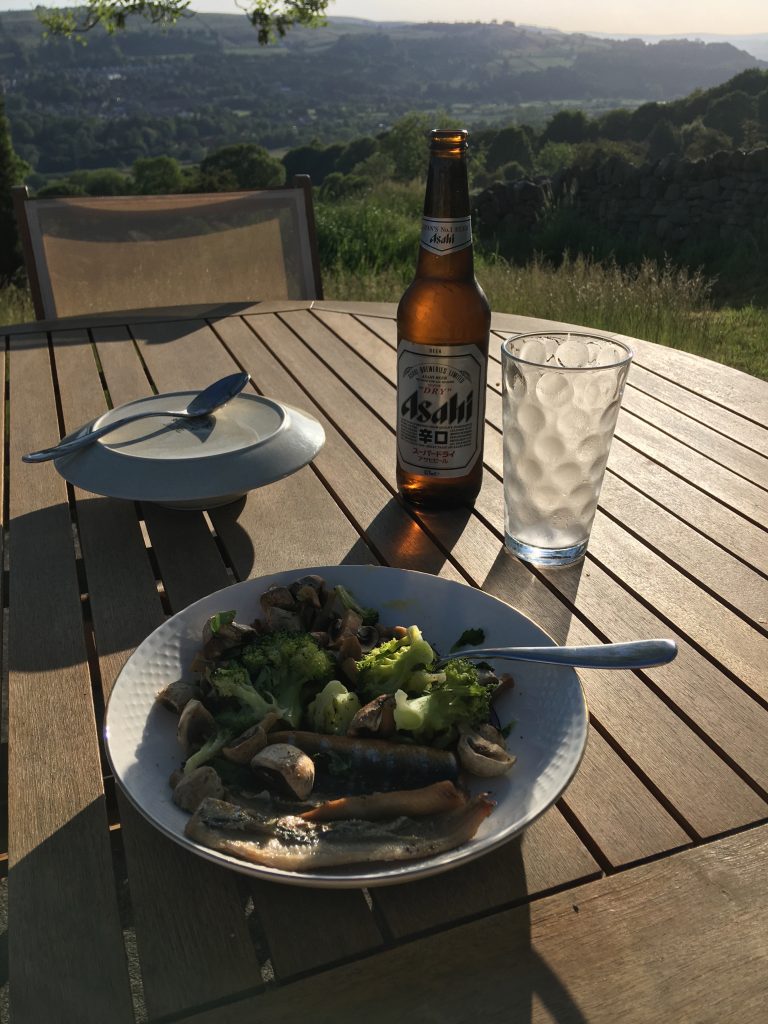
This was followed by more alcohol and time at the piano with some Ravel, Debussy or anything else that took my fancy. William Baines, perhaps. Then bed. Then repeat all of the above for as long as it takes.
I was not consciously working on my own music, nor on composition, nor working on technique or facility. There was no searching, no furrowed brow artistic struggle to become anything other than someone who enjoys playing a bit of piano to unwind after some hard manual graft.
Let’s rewind a little, and to an edition of Chipping Norton Music Festival, sometime in the early 1990s… I remember playing in a couple of concerts and receiving feedback from adjudicators, and in one such concert, a burly-looking man strolled up to the piano and played a Chopin Scherzo (in Bb Minor). He didn’t have the appearance of a musician, but someone of a very different vocation. I could see it immediately in his hands: they resembled those of my farmer uncle, Erik Tutt. Erik had thick, leathery, weatherbeaten hands that could milk cows or work mechanised farm equipment with ease and deftness. Back in Chippy, I found the man’s performance of Chopin simultaneously exhilarating and hilarious. This was someone whose embodiment of the piece seemed so total, and was playing the music purely for the joy of it – not to be a professional, but to be something that gave context to and is an extension of the quotidian of daily life. I have no idea whether he was or was not a professional musician, a farmer, a part-time care assistant, or what. But my reading of the potential of this performance was something I have solidified and carried with me ever since. The concept of being able to enjoy the power in music and not be a professional musician was exciting to me – as it offered an alternative solace to a teenager looking to music for alternative routes, or lateral answers to deep-seated inadequacies. Making a short story long, falling into this daily routine almost by accident this year, I managed to fulfil something of that dream: I became that man at the music festival.
FIELD RETAINING WALL – REBUILD
Philip Dolphin is arguably one of the finest dry stone wallers in the country – and luckily, lives only up the road in Skipton. Out of three people I contacted, Philip was the only person to respond and not be intimidated by the scale off the work. He’s also one of the nicest people on the planet. Philip and his colleague (also named Phil, pictured below), turned up day after day, and made a work of art.
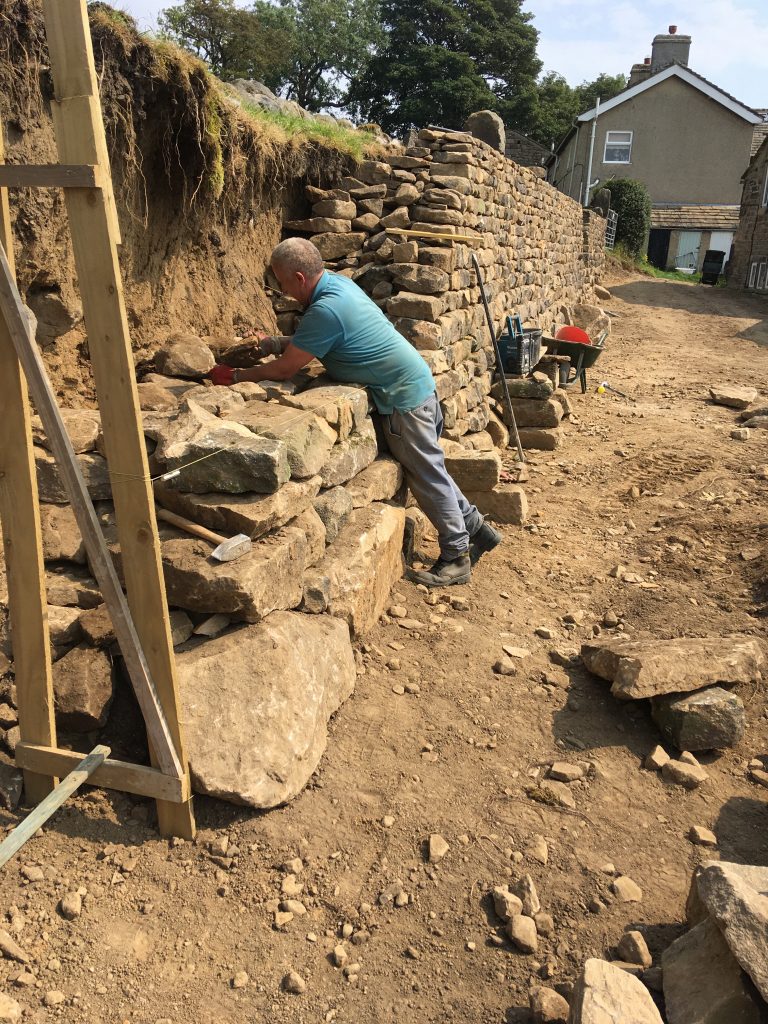
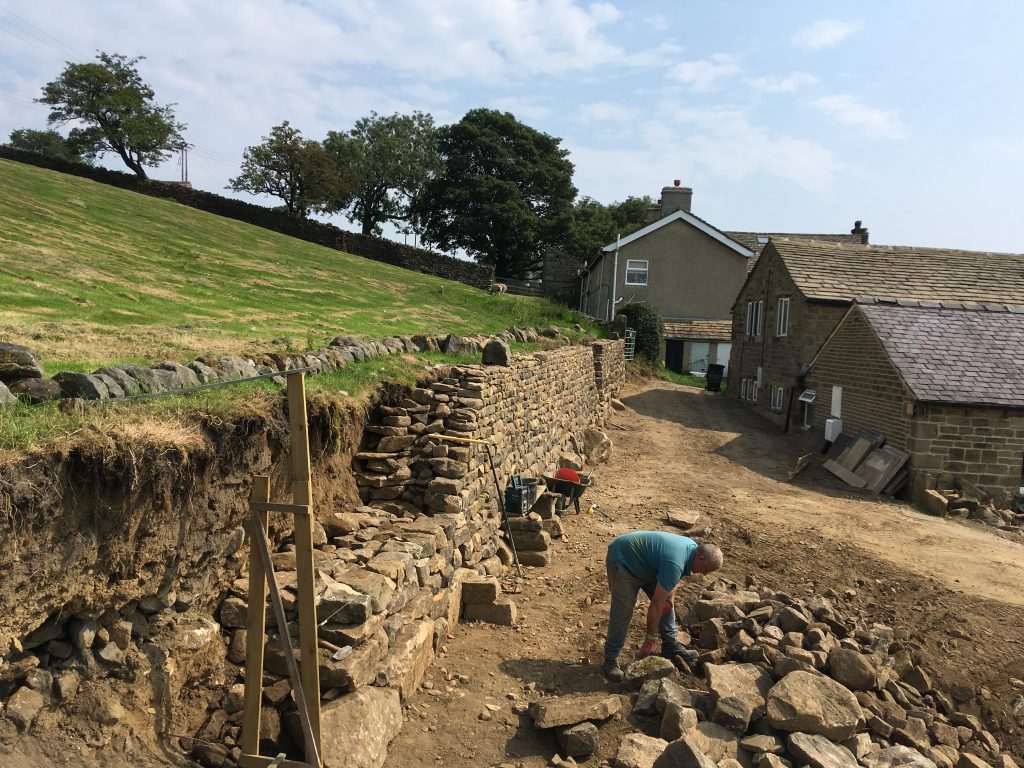







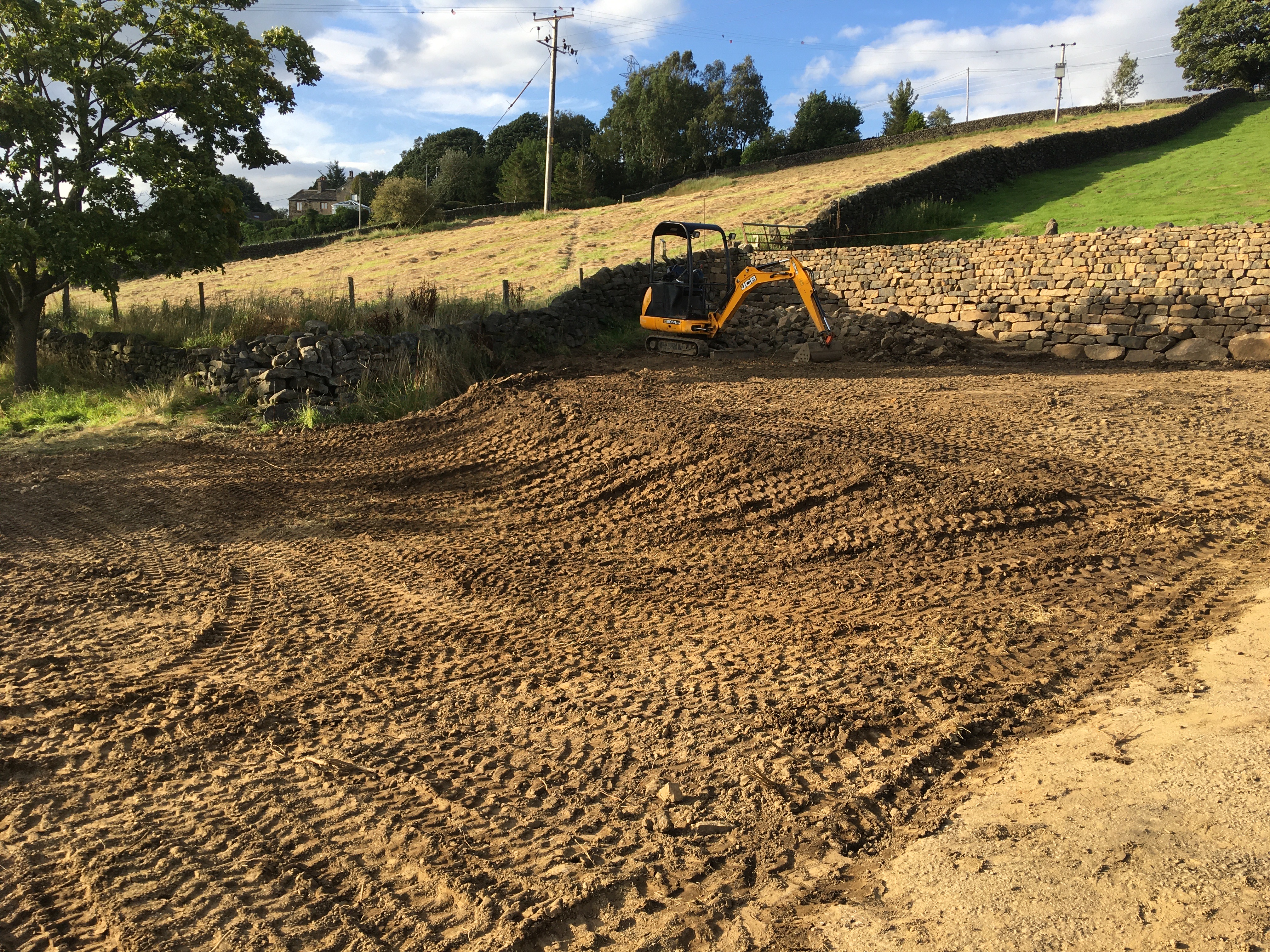
STILE
In 2013, on the day I collected the keys to the house, the footath was overgrown, badly maintained, and its surface was waterlogged due to a blocked field drain. Here’s how it looked before/after the rebuild:
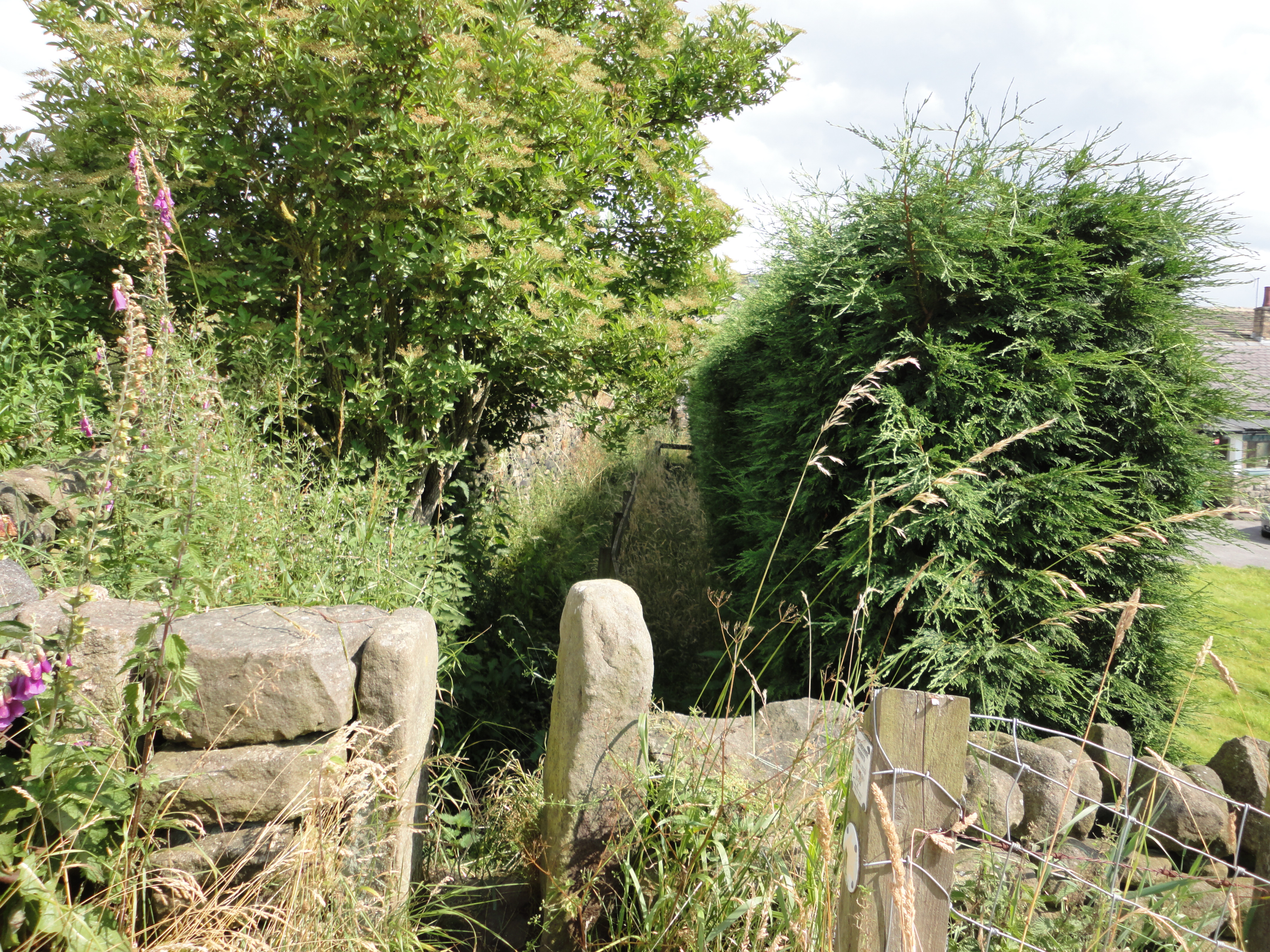
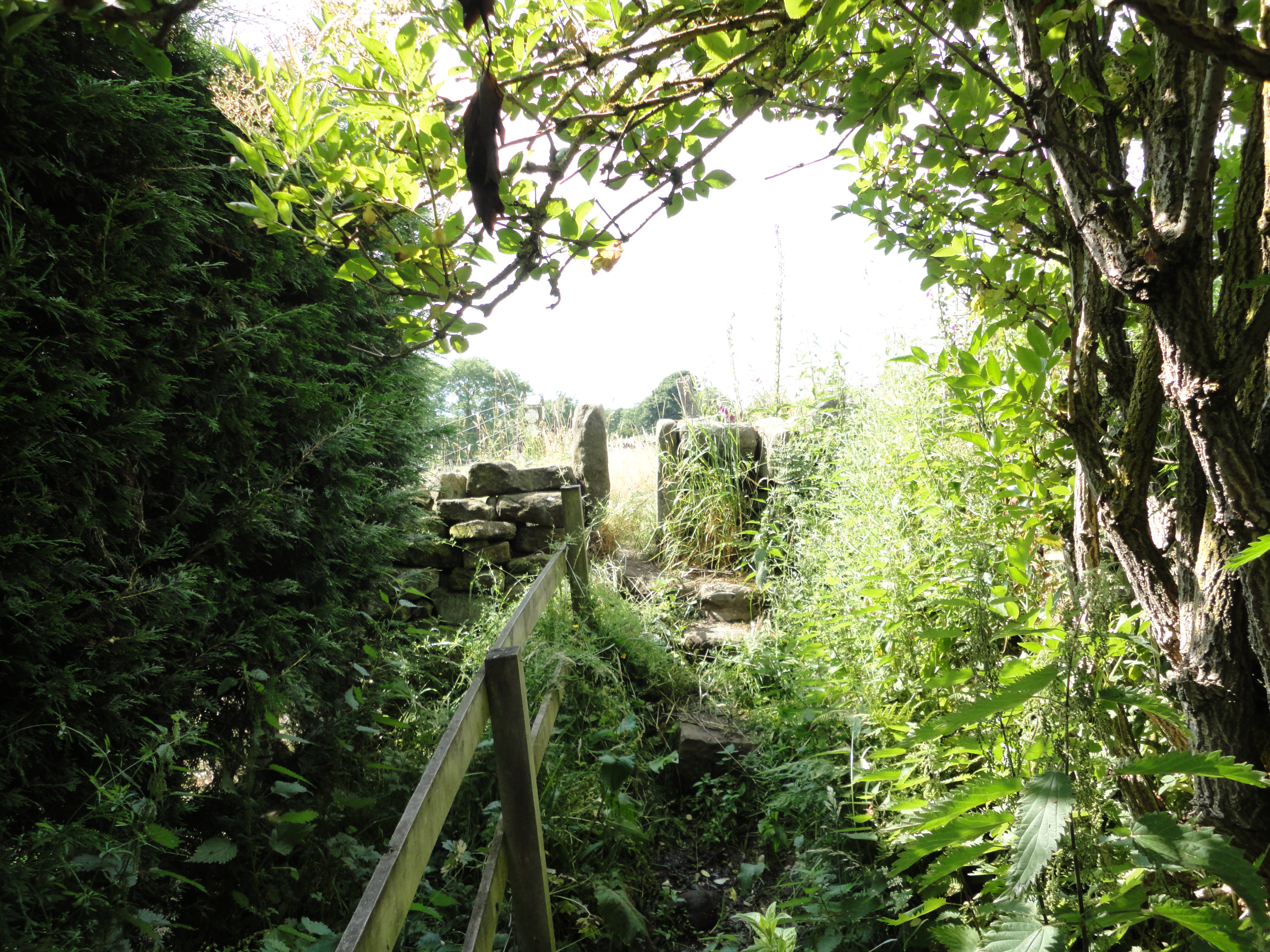
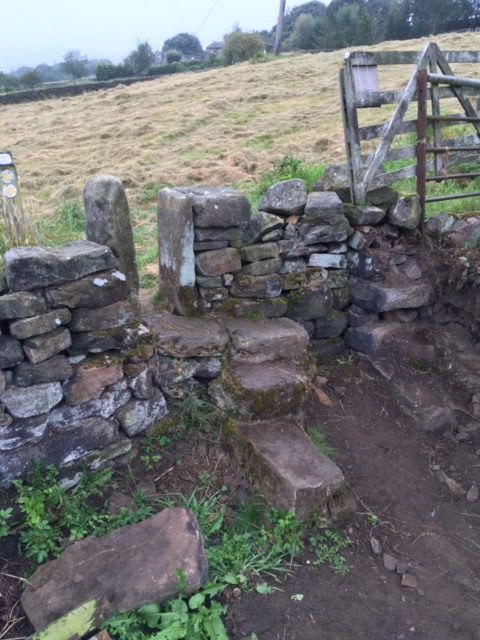
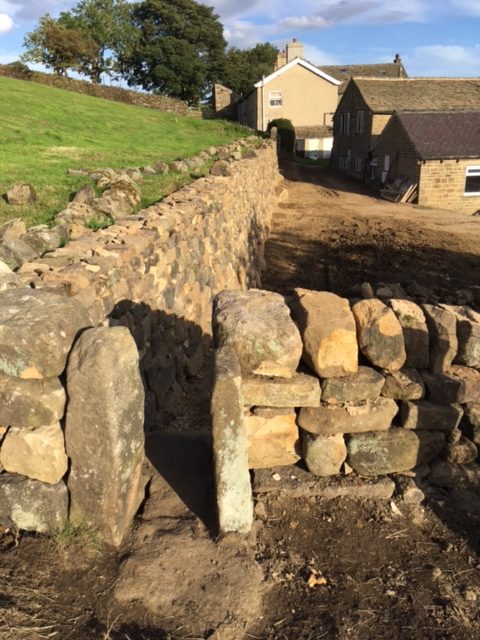
On lowering the footpath level, I uncovered a second field drain, which appeared to be out of commission, so simply filled it in/carried on with the rest of the work. Then it rained, and I discovered that it wasn’t out of commission at all. Further excavation was required to find/uncover the drain, and attempt to bridge or link the disjointed flow of water. Mistake successfully corrected, after much unnecessary work. Lesson learned…
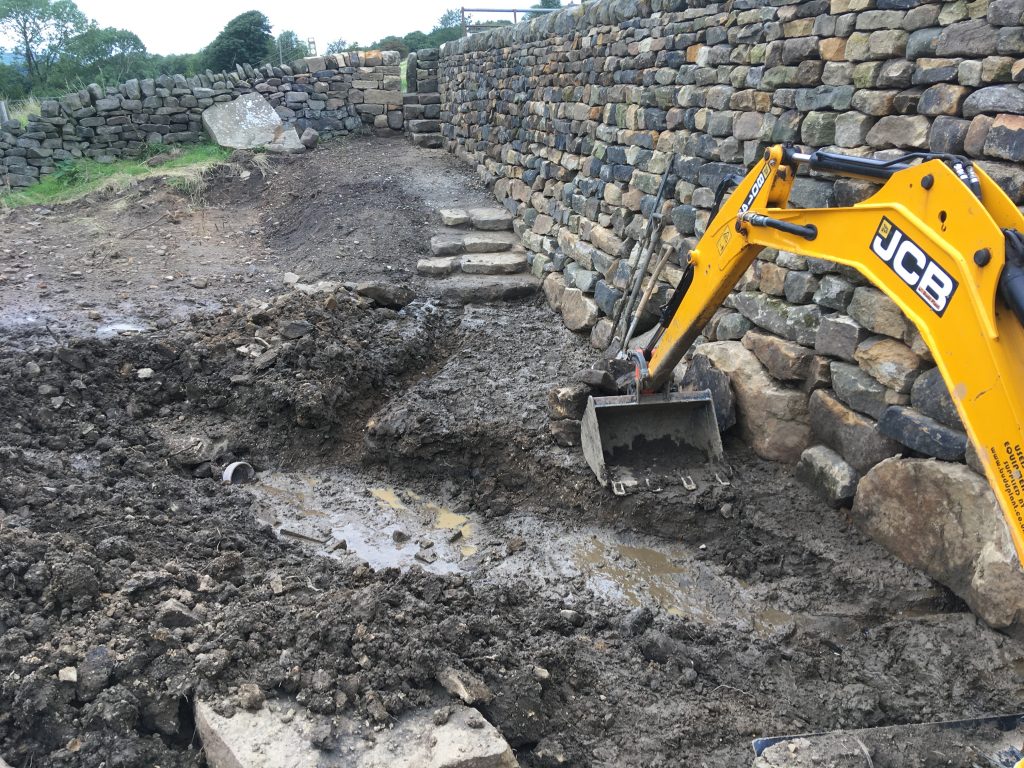
DRIVEWAY / GATES & RAILINGS
Up to now, all of the work had churned up the driveway/footpath surfaces into a horizontal mud landslide, so twelve tonnes of crushed sandstone (14mm-00mm) was delivered, compacted. And to say nothing of the hardcore beneath it, taking many hours of sledgehammer work to reduce various site rubble down to a usable size (cue Peter Gabriel’s Sledgehammer / DIY). Andrew Brind fabricated the gates and estate railings, which were fitted, welded, and painted on site.


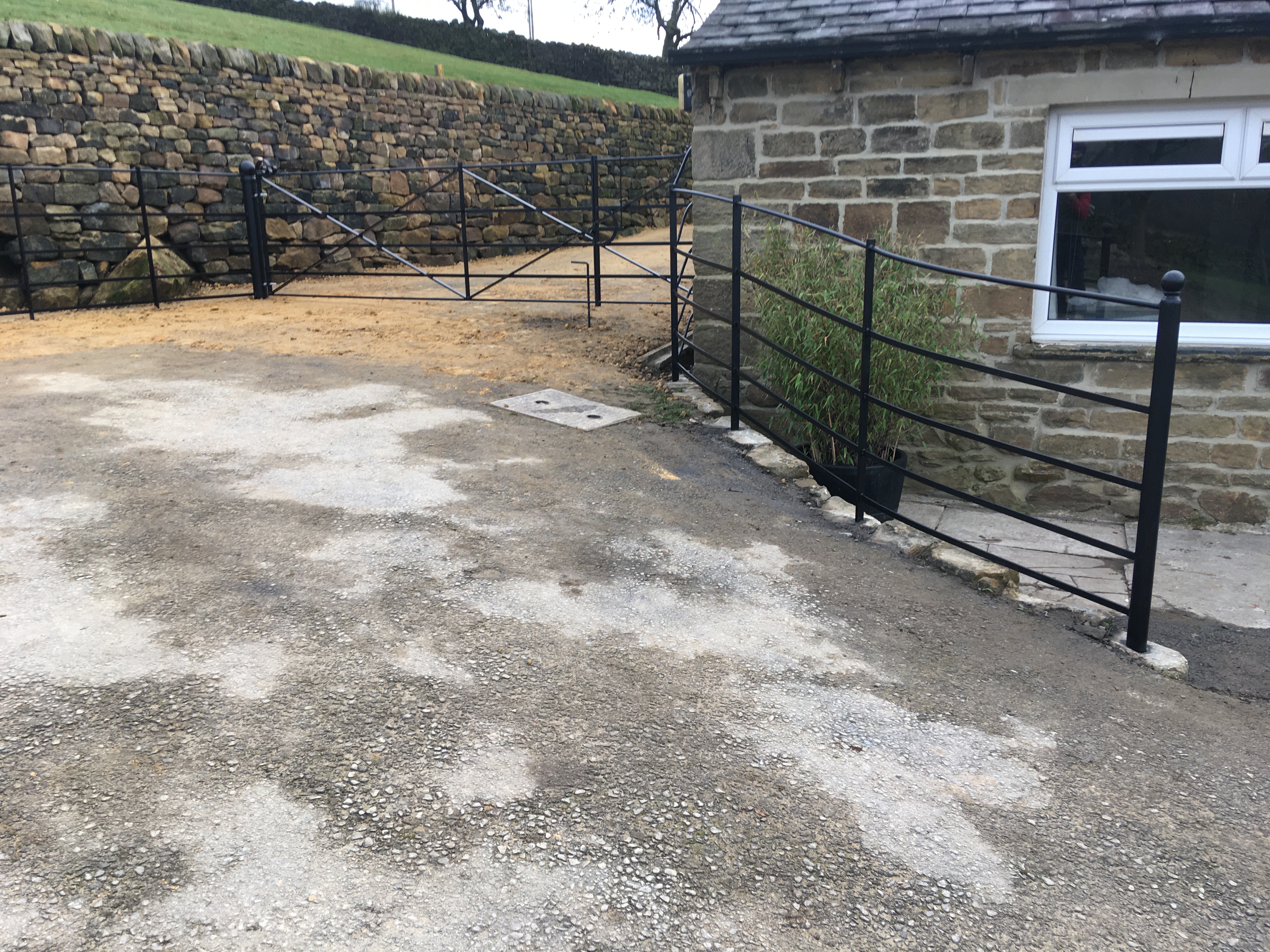
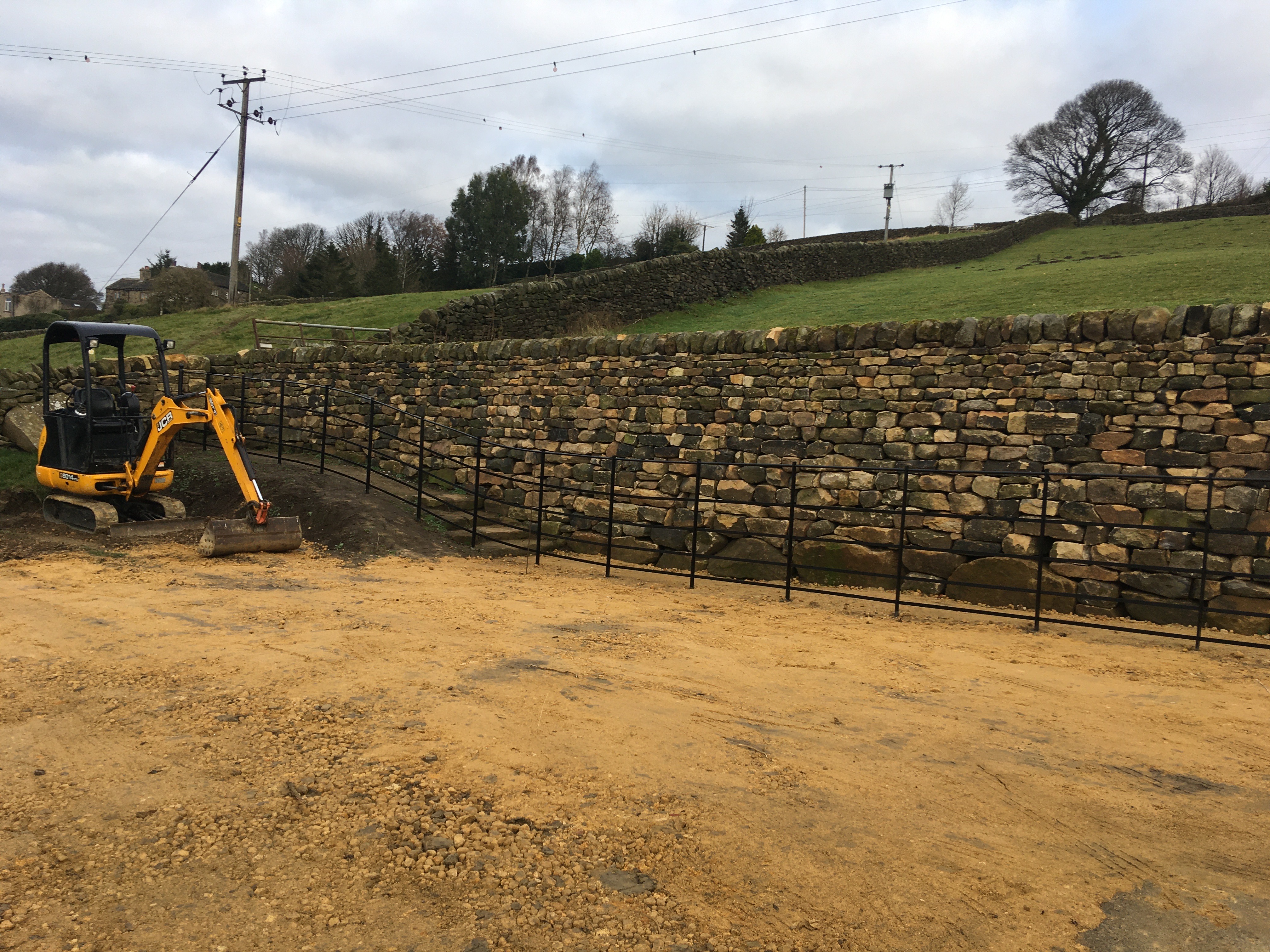
EPILOGUE : STONE
And now for some poetry: pictured below is a piece of Cotswold stone – quarried only a few miles from my childhood ends near Ebrington, Gloustershire. My very good friend, Glenn Armstrong collected it, and, brandishing his stonemason’s tools for the first time in thirty-one years, cut and made impeccable work of the inscription. It’s uncanny: a stone object associated with my boyhood past, situated within my current geography, hand carved by a dear friend in my youthful(!) present. Now that is a gift…
I’ll leave it there. Wishing everyone a safe and sound Christmas holiday, and let’s hope we all emerge into a much less insane 2021. x
Stay tuned for Part II. In the next instalment you will learn how I got into/out of this…
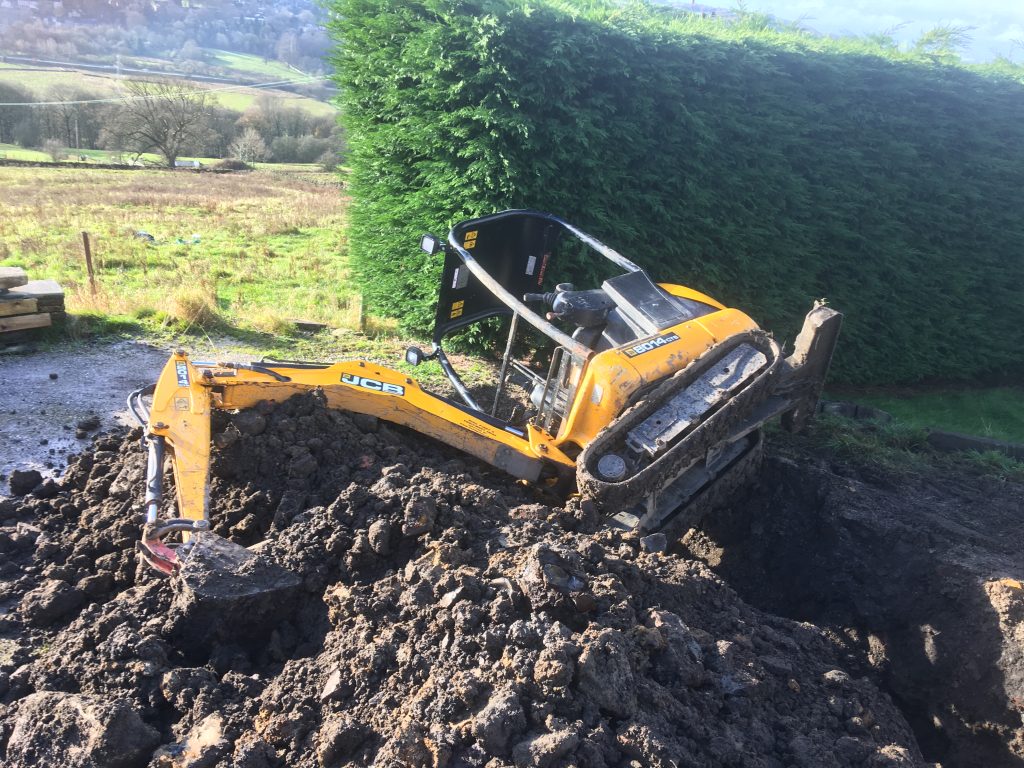
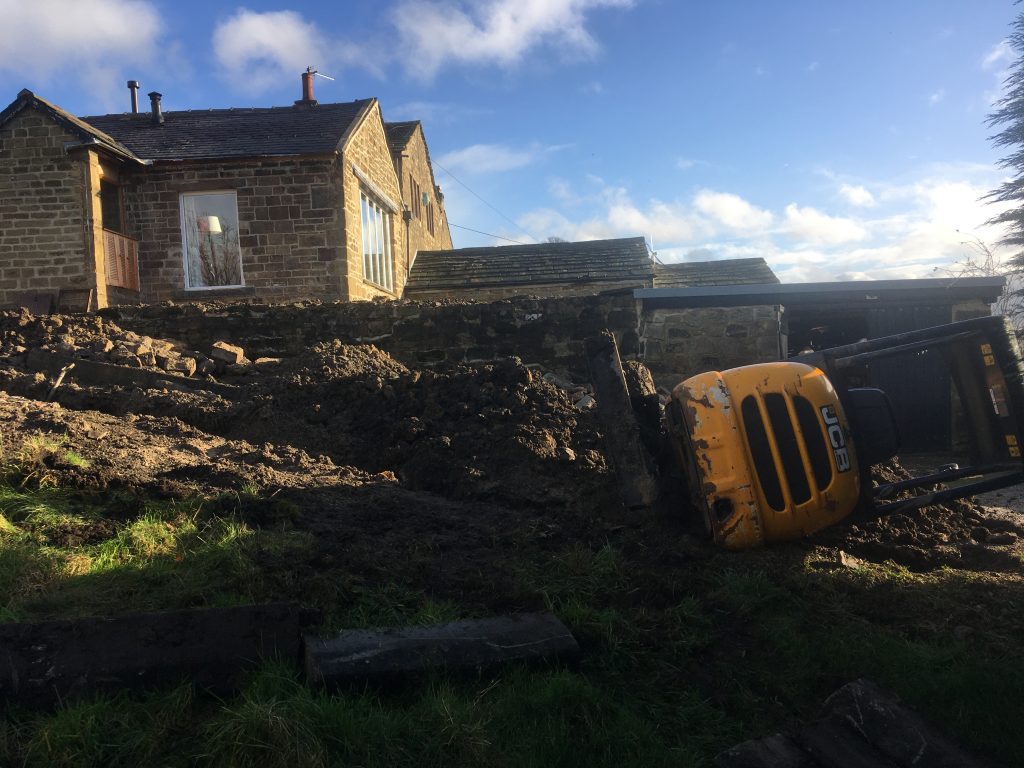
TO BE CONTINUED…